Premature evacuation, part two.
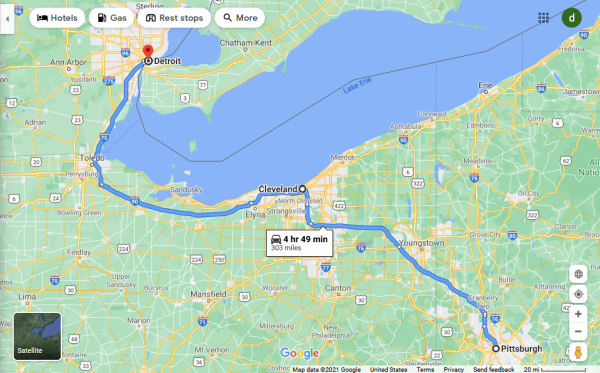
303 miles.
DAY EIGHT
Tuesday, September 4th
We woke up feeling like baked potatoes again to 85-degree weather. We tried to tough it out and keep sleeping, but it just wasn’t possible. After getting some fruit from the Walmart, we drove until the gas light came on and pulled into the nearest truck stop to beg for money to fill the tank back up. It was a Pilot travel center in North Lima, Ohio, and from past experience I had very low expectations in the hospitality of Ohio residents.
Sure enough, despite a steady influx of patrons, we spent most of our time there from 1 until almost 6 sitting upright in the car and sweating while reading our books. After acquiring some cardboard from a dumpster, I began writing our sign. I always keep them simple and friendly. As I was doing it with a thin Sharpie, a postal worker woman handed me a thicker one and asked, "Need a bigger one?"
It was so nice, but would be the last donation for almost two hours. As we ate our bananas and grapes, some rapscallions in a beat-up car yelled, "Yeah, eat healthy! That’s what I’m talkin' 'bout! Yo, I don’t fuckin' blame 'em!"
We got some cans of ginger ale Zevias cold by sticking them in the chest of ice bags for sale--they had left it unlocked, thus providing us a free temporary freezer. Flies and gnats flew all around us.
So this was how we were refilling our gas tank for the rest of the trip, because it was the only way we could ever afford to drive around the country. This sorta thing allowed me to travel for over three months at the end of 2016, and further reinforced my confidence in human beings to take care of each other, even dirty kids simply trying to have fun. Some days and some gas stations aren’t the most altruistic, such as this Pilot in North Lima, Ohio we'd been at since 1, but I knew on a long enough span of time we would be given enough to fill the tank again. It was easy to get frustrated by all the people who ignored us or just couldn't help, but nothing impacted me stronger than those who gave. One person giving us $2.50 totally canceled out two hours of getting nothing. We were not special, and no one owed us anything. We did not feel entitled to assistance on our romp around the country, and there were definitely people in more dire need of a couple bucks than us. So every penny gifted to us was an absolute miracle to me. Over the last decade, whether hitchhiking, panhandling, couch-surfing, or just being in a general bind, I had either chosen or had no other option but to close my eyes and let myself fall back, trusting that total strangers would catch me before I hit the ground--and sure enough, they always had.
2:43
A woman handed me $1.50 in quarters. I thanked her and told her she was the first person to give us anything in two hours. "That’s rude!" she responded while pulling another crumpled up dollar bill from her jeans pocket.
4:00
A man wearing a high-vis vest gave us $5.
4:22
A young white guy with a Jeep handed us a dollar.
At 4:40, my Instagram stories that were covering our progress in real time caught the attention of a friend named Kimberly, who then PayPaled me $15. By quarter to 6, Garrett had PayPaled me $25, thus bringing us up to $49.50--enough to fill a tank at almost $3 a gallon!
We were able to drive straight to Cleveland and eat dinner at one of my favorite spots when traveling: Melt, a grilled cheese restaurant with an entirely separate vegan menu. We’d been trying to eat exclusively at 100% vegan restaurants, but this place earned an exception. We got the "Mom's Meatloaf" (homemade vegan meatloaf, chipotle ketchup glaze, mashed roasted garlic and chive potatoes, and mozzarella) and the "Chorizo & Potato" (housemade spicy chorizo and potato hash with cheddar), along with orders of buffalo and barbecue Wild Tofu Wings. I wasn't excited to be in Ohio for even one night, but dinner there made it worth it!
Afterwards while loitering at a Starbucks, using their free WiFi to create an itinerary for the next day or two and hijacking their electricity to charge things, an old black man in a nice outfit who had been sitting alone across from us asked me in response to my "Fight Racism" sticker on my laptop, "What are you doing to fight racism?" He then went on a lengthy and eloquent tirade proposing that religion was the source of all the hate, wars, and problems in the world. I told him I mostly agreed. (I didn’t bother bringing up capitalism since it seemed like he was getting to something.) We were then blindsided by his ultimate point being that... religion was the only thing that could save us, specifically Jehovah’s Witnesses, who he claimed didn’t permit hate of any kind, unlike all other religions and their subsets. Alyssa asked him how the solution to religion causing all the world’s problems was more religion, and he chalked it up to their religion simply being the "right" one. Ya know, what literally every religion tells you that leads to the inevitable divisions that cause the problems he was crediting all other religion with. I asked him about homophobia and he went on the usual "Love the sinner, hate the sin" bullshit. He called homosexuality "unnatural", as if immaculate conception wasn’t. He had a ridiculous explanation for everything we threw at him. Immaculate conception was natural because it at least involved a man and a woman, which assumed God was a man. Incest was permissible, but only back when Adam and Eve were around--they were perfect, so deformities weren’t possible yet. The parts of the Bible permitting the stone executions of women for lying about being virgins on their wedding day or for being raped and not marrying their assailant were laws only applicable to Israel way back when and weren’t enforced by the Lord anymore.
The discussion grew more disturbing with time. We continued to engage out of boredom. When I told him Alyssa and I were decent, virtuous people who did good and no harm, all without a god, he wasted no time bringing up The Rapture as if to politely threaten me, though he’d probably argue he was just kindly warning me. When I asked him to clarify that he was telling me that even people who did good would be killed just for not believing in a god, he told me that was certainly the case.
"And that’s a loving god?" I asked him.
He shrugged and said, "Yes, he gave you the choice!"
When I asked him why a merciful god would decimate good people just for not wanting to join their fan club, he used an offensive analogy wherein people like Alyssa and I were "cancerous" and a doctor would obviously want to get rid of that cancer. He kept repeating some stats on how many homes Jehovah’s Witnesses had gone to in whatever amount of time, adding, "So no one can say they didn’t know. They just wouldn’t let us in!"
I said to him, "It’s a shame y’all didn’t put that same amount of time and energy into feeding the hungry and providing shelter for the homeless," and he countered that by saying that that was god’s job, and that anyone who truly believed in and worked for god was never hungry or homeless. I asked him to clarify that what he was saying was that all hungry and homeless people were so because they weren’t serving god well enough, and he again meant exactly what I thought he did.
I reiterated, "And that’s a loving god?"
In the end, I told him that his god seemed very petty, and that if his god was the type that would kill off decent people just because they didn’t cater to their ego, then I wanted nothing to do with that god. I told him we didn’t believe in love and care with conditions. When I asked him if we’d be going to Hell, he said there was no Hell, and that we’d just cease to exist after The Rapture. I told him that sounded fine to me, and that I’d rather die than spend eternity with his asshole of a god. The employees of the Starbucks flicked the lights on and off and played "Closing Time" by Semisonic really loud, thankfully interrupting this disgusting religious debate.
We relocated and loitered at a Denny’s, whose parking lot we planned on sleeping in for the night. I decided to treat myself with a soda, but they were out of Coke. Our waiter later said they had some, but that it was coming straight out of a two-liter bottle. I'd also heard him tell customers they were out of ice cream and tea. We were exploring the little Cleveland had to offer the next day before heading towards Detroit!
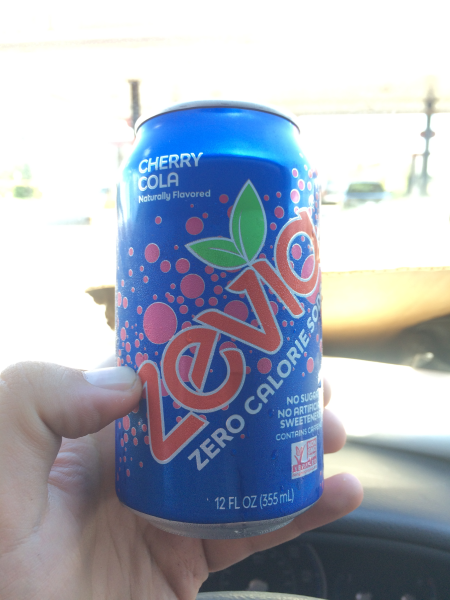
A nice, cold can of cherry Zevia, one of my favorite sodas.
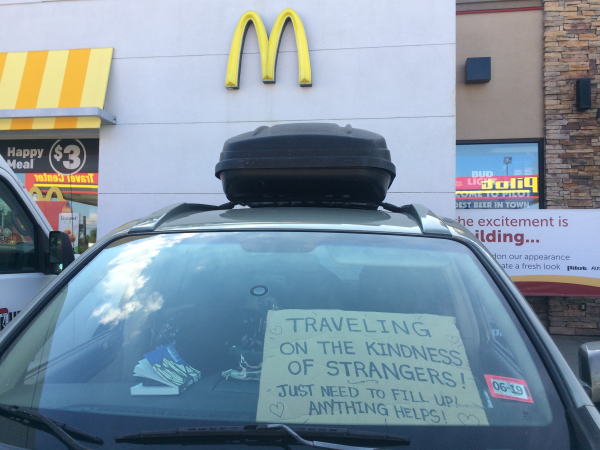
My default, tried-and-true beggar sign.
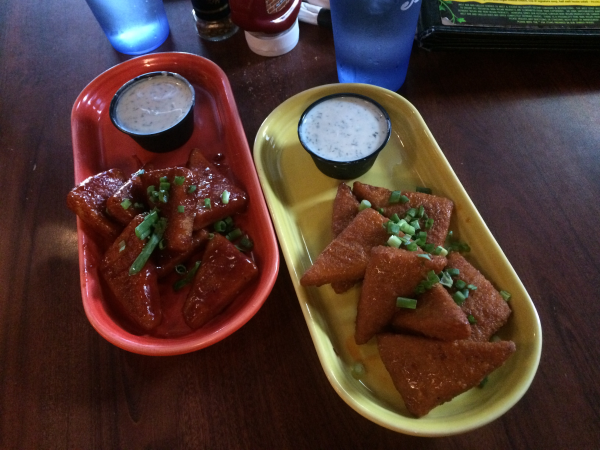
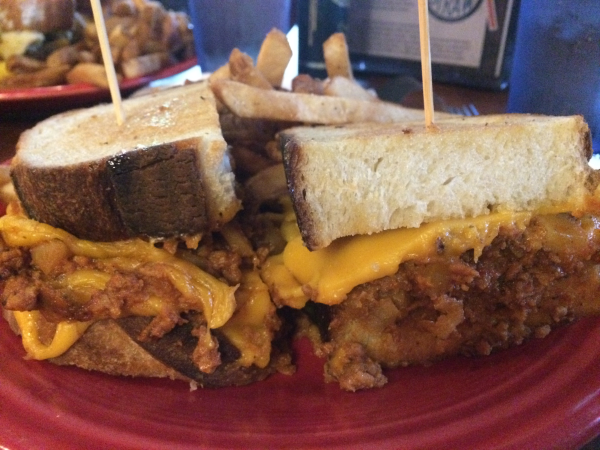
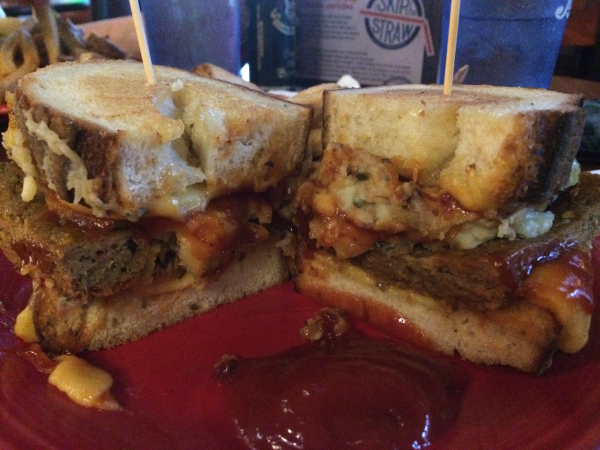
Melt!
DAY NINE
Wednesday, September 5th
Apparently, 10AM was the latest the sun and heat would allow us to sleep, so there we were again waking up covered in perspiration in a parking lot. We briefly sat in the shade of some bushes behind the Denny’s for relief. Some city worker leaning against his truck with his colleagues smoking cigarettes did the corny cartoon Tex Avery wolf whistle at Alyssa as she walked back to the car from the bathroom. She just ignored him, and I blatantly pointed at him and laughed as we drove by.
We started our day of exploring Cleveland at Lake View Cemetery, slowly hunting down some special sites I’d read about online. All the way in the back of the cemetery, next to a dumping area, stood a tree adorned in at least fifty pairs of shoes, many of which were falling apart and some that clearly belonged to children. It was actually a pretty morbid sight considering where it was located. It was an unofficial spectacle of the cemetery, and where it stood overlooked the economically depressed neighborhood that surrounded the graveyard. Online, I saw someone say it was customary for employees to throw a pair up when they retired, but the more likely theory I read was someone who said they were told by a worker that the shoes belonged to those who had died on the East Side. We also saw a very creepy angel statue that appeared to have been weeping/wearing black metal face paint. I didn’t know anything about the Haserot family, but the statue was sculpted by Herman Matzen in 1924 and was literally titled "Angel of Death Victorious". Someone left her some spare Canadian change.
From there we went to the Allen Memorial Medical Library, stopping along the way to gaze in awe at a giant hand standing outside of the art museum. Tucked away at the library on the third floor was the Dittrick Museum of Medical History, which was a small free museum of medical tools and imagery from the 1800s to modern times. What got us out to this above anything else, though, was their special exhibit on contraception, its history from tribal superstitions involving beaver anus and crocodile dung to the modern usage of pills and intrauterine devices, with all of the religious and patriarchal setbacks in between. It was fascinating and far more disturbing than I'd even anticipated. As it turned out, women had been going to great lengths for centuries to avoid pregnancy, and had been willing to try just about anything to achieve contraception. Meanwhile, men had alternated between supporting it for selfish reasons and denying it for selfish reasons. We saw displays of things removed from women’s bodies, a collection of the different IUDs that had been created over the last century, early models of cervical cups and douches, black market contraceptives, religious displays that demonized not just birth control but also masturbation, and a creepy midwifery mannequin. Outside that room were displays covering the slow and risky advancements made over the last 200 or so years in battling disease. It seemed like diphtheria, smallpox, and syphilis were all the rage back then. Coincidentally, outside were an unusual amount of billboards regarding STD tests, leading us to believe Cleveland was having some trouble staying clean.
Nearby, we saw the giant FREE stamp, one of Cleveland's best known landmarks. By sculpting duo Claes Oldenburg and Coosje van Bruggen, known for their large pieces, the aluminum and steel "Free Stamp" was 49 feet long, 28 feet high, and weighed 70,000 pounds. The artists had been commissioned in 1985 to design a piece of art to stand outside the new corporate headquarters of an oil company. The company was bought by British Petroleum not long after, and the new owners decided the piece wasn't appropriate for them. They tried to pawn it off on the city, who resisted at first, but the giant FREE stamp eventually found its permanent home in Willard Park.
I’d somehow forgotten that Cleveland sat along Lake Erie until I saw there was a beach called Edgewater right outside the city. I was excited like a little boy at the prospect of finally going to a beach again without having to be all the way on the west coast yet, and the excruciating heat made it an especially appropriate day to be soaking in a body of water. I made the mistake of walking across the sand barefoot, and honestly thought I was getting second-degree burns on my soles until I looked and saw that my flesh was still thick and intact. The water was lukewarm like a bath and the sand somehow had been molded into a perfect pattern of thin ridges by the waves. We spent some time sitting under the shade of a tree on some shoreline rocks a few feet away from a man wearing a Coors Light t-shirt and eating a bag of food from Arby’s. It was very pleasant, though Alyssa was in a funk over the fear of burning up. As a particularly pale girl, she hated beaches.
By 3, we decided to finally get something to eat. We found a Whole Foods and bought a buncha fruit with my recently replenished foodstamp card: watermelon, cotton candy grapes, bananas, an apple just for Alyssa, and some cold cans of Zevia. It felt good to get water and food inside of ourselves, even though we did it at the Whole Foods pub, where soccer moms and hipsters nonchalantly day-drank organic craft beers.
I walked around in my boxers for the rest of the day. We went out to a bookstore called Visible Voice in a hip little part of town and browsed for a while. I read some radical children’s books, including one so cute it made me wanna cry called Tough Guys Have Feelings, Too. My therapist called just to check in, which was nice. I ended up buying a book about dangerous plants by a woman whose book on dangerous insects really fascinated me in 2016. The girl working the register seemed angry with me for buying something.
We went and saw the house from A Christmas Story, of course. It had closed tours for the day, but we wouldn’t have paid to go in, anyway. Instead, we just cherished it from the outside. It even had the iconic leg lamp in the window. After that, we hunted down a big flower sculpture made of bike wheel rims that marked the beginning of a trail at the end of an otherwise shitty neighborhood.
On our way to dinner, the city’s weather split into two worlds, to the point that we could look to our right and see a clear blue sky with sunshine and to our left a hazy grayish-brown sky full of ominous clouds and the mist of distant rain. We got caught in a torrential downpour with droplets so big that they sounded like they’d break the windshield. All bets were off with weather in post-global-climate-change America.
If you knew me, you knew that my favorite pizza in America was Mellow Mushroom, and that I’d visited more than two dozen of their locations around the country (they were that consistent). So I jumped at the opportunity to eat there when I found out there was one in Cleveland. The crust and sauce were exactly as I always loved, but they apparently had switched from Daiya to Follow Your Heart, which practically ruined the whole thing and likely ensured I wouldn’t bother going to them anymore. Follow Your Heart was the first vegan cheese I’d ever had on pizza back in 2009 when I was working at a pizza place I’d convinced to carry vegan options. At the time, Follow Your Heart mozzarella blocks were all there really was through distributors, and we had to grate the bulk blocks ourselves, creating moist noodles of mediocre vegan cheese. Baked, it would sometimes become very soupy, and would leave a chalky feel in your mouth. After Daiya came out, I never looked back. But this day, I had it again. I gave it a chance with an open mind and it was almost nostalgic how it tasted and felt exactly the same. Holding my slice of pizza up, the cheese would slide off into goopy clumps onto the plate, just like it used to. I was truly bummed to finally see my absolute favorite pizza of the last decade tainted. The crust at the end of each slice, the tofu and mushrooms, and the garlic cheesy bread were excellent, though! After dinner, we started driving toward Detroit, and stopped once we saw a big Flying J truck stop just outside of Toledo.
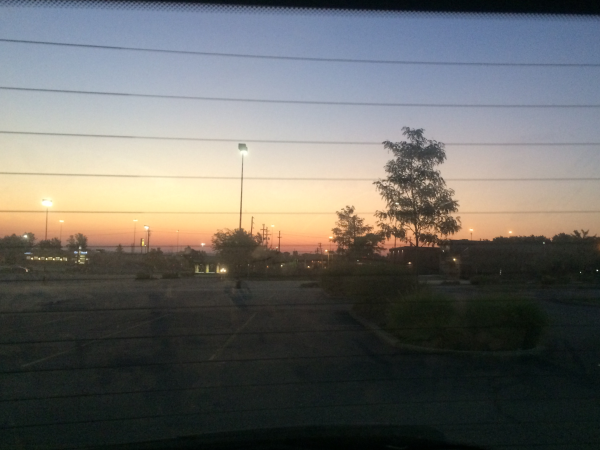
Sunrise over the Denny's parking lot.
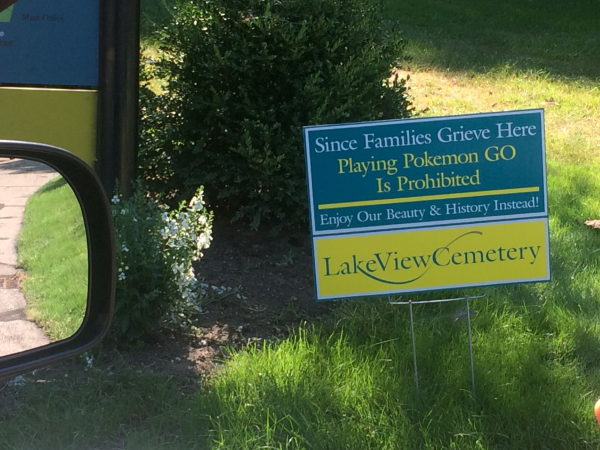
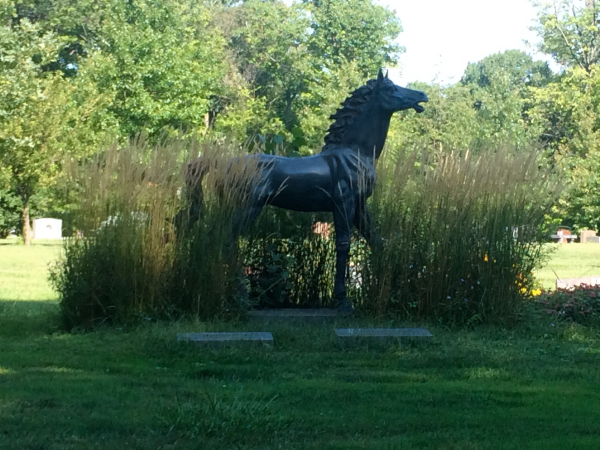
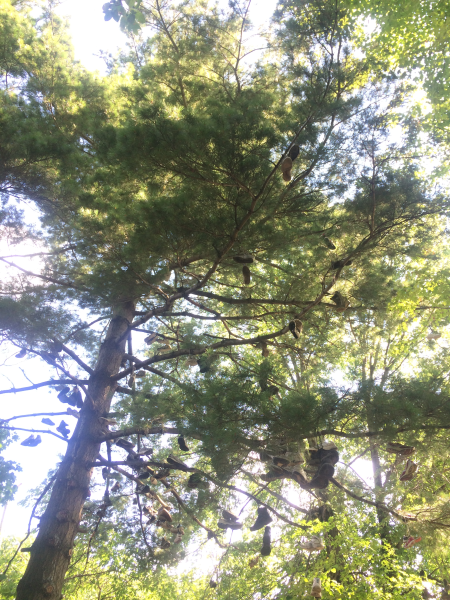
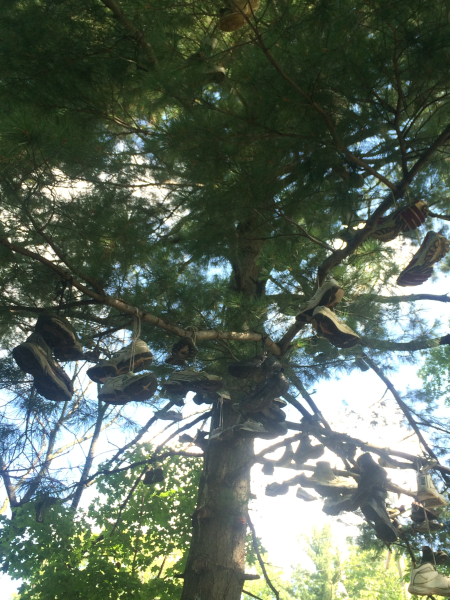

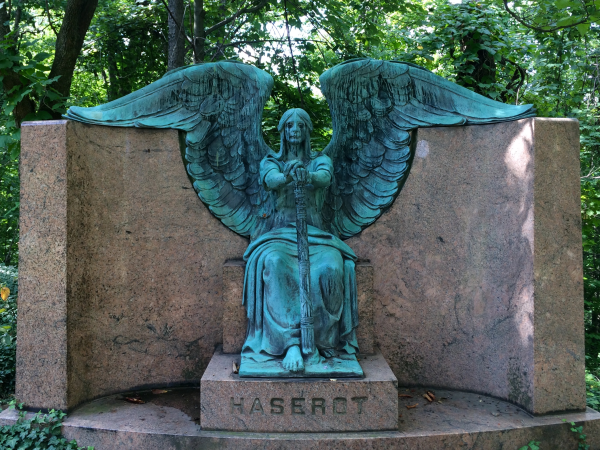
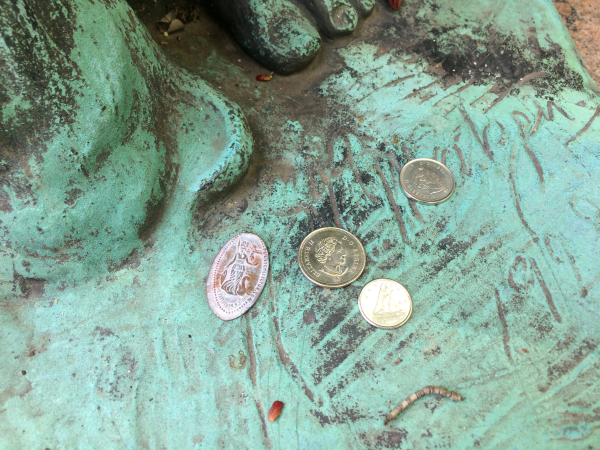
Lakeview Cemetery.
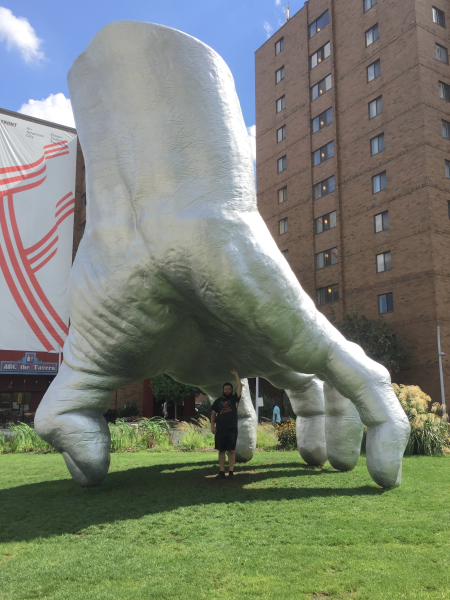
Under the giant hand by Tony Tasset.
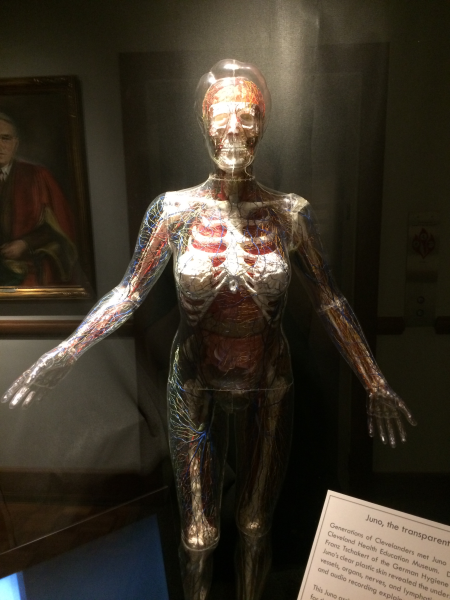

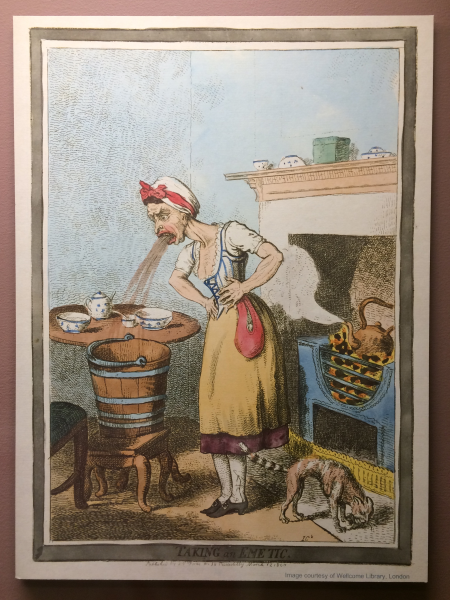
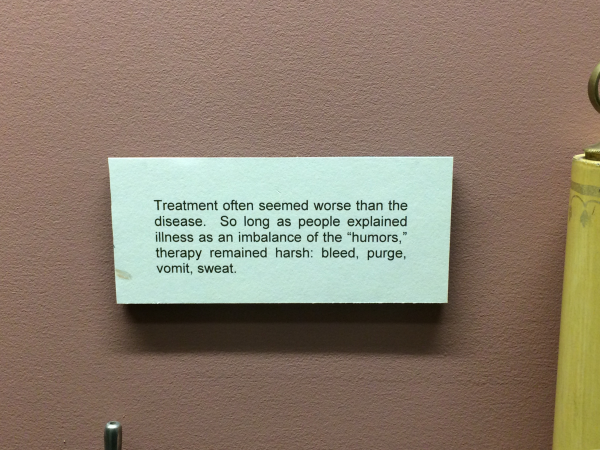
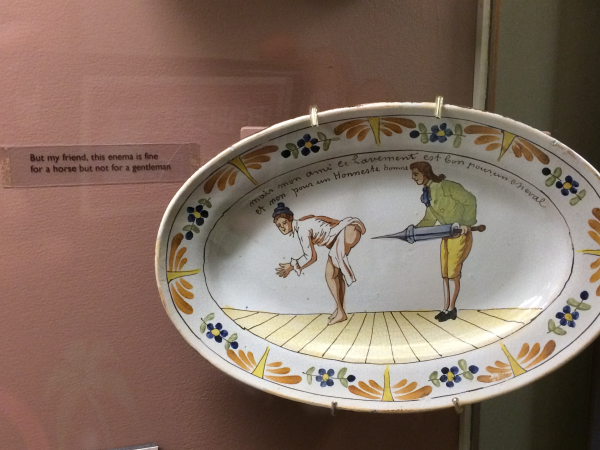
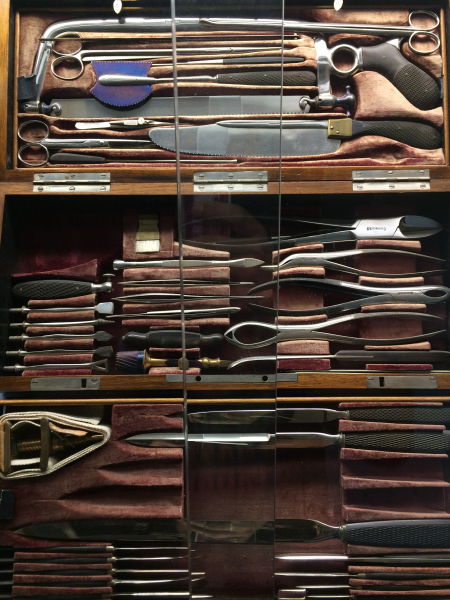
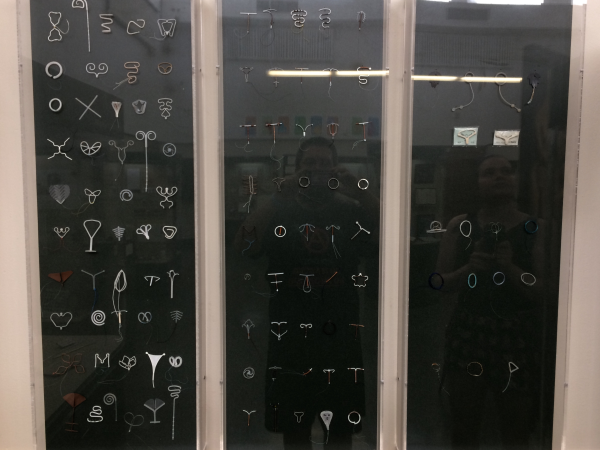
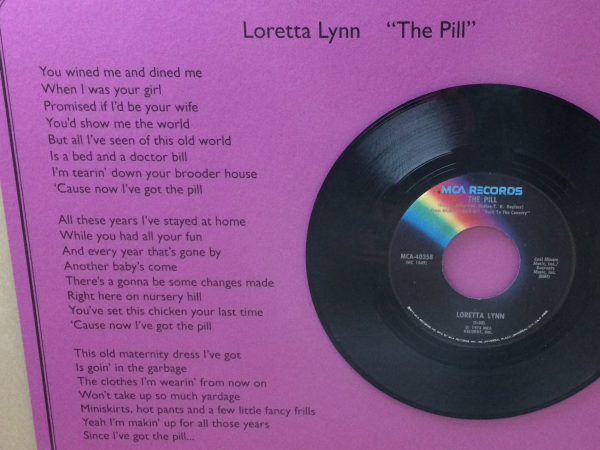
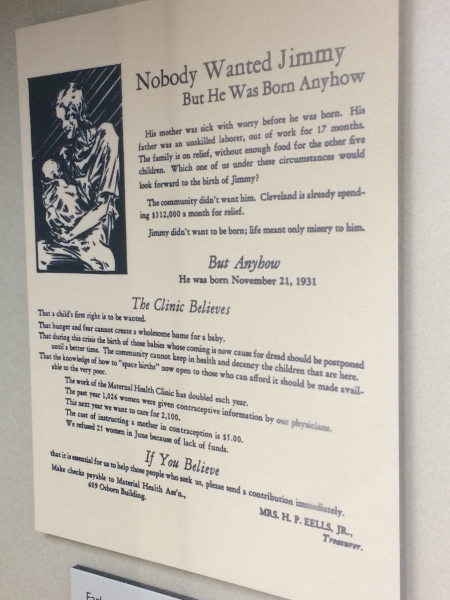
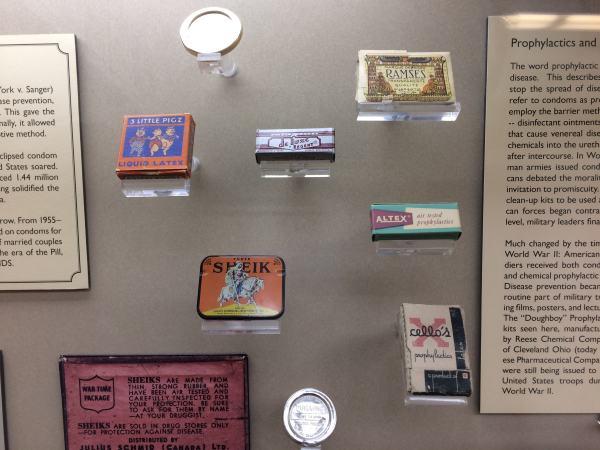
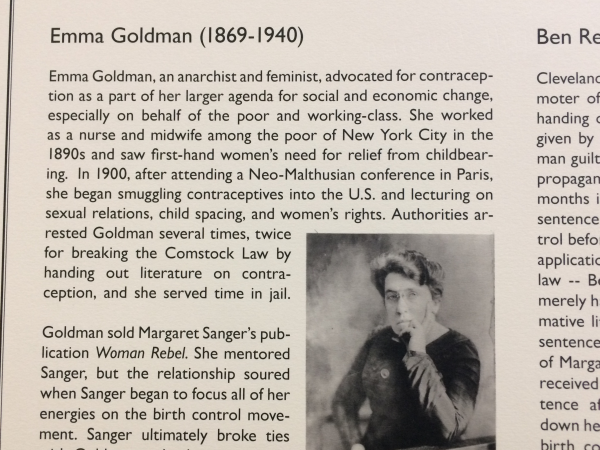
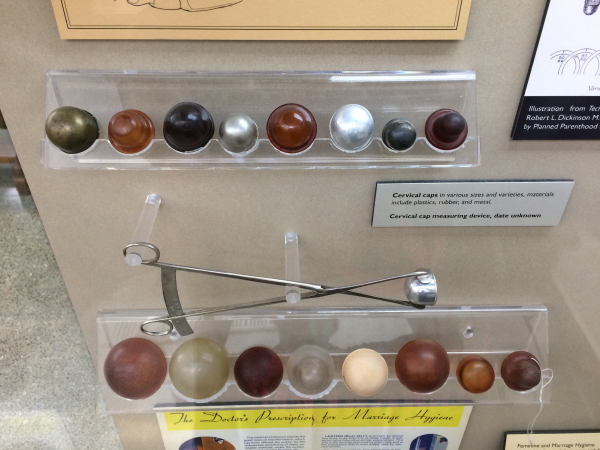
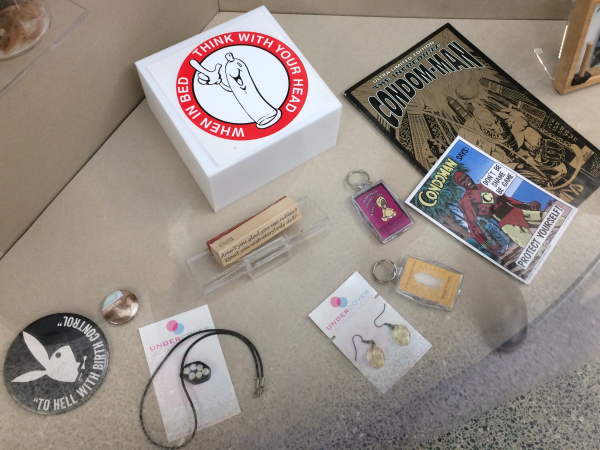
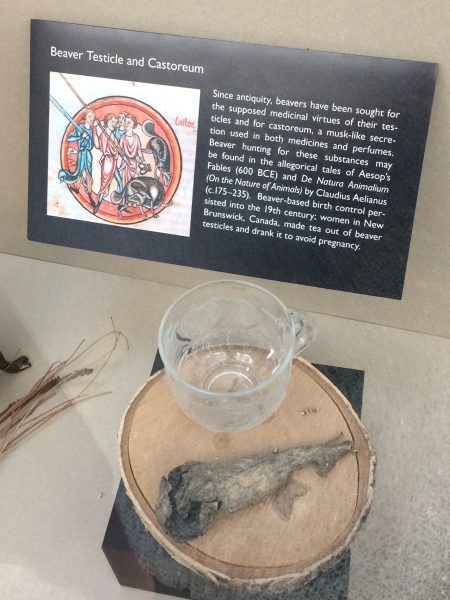
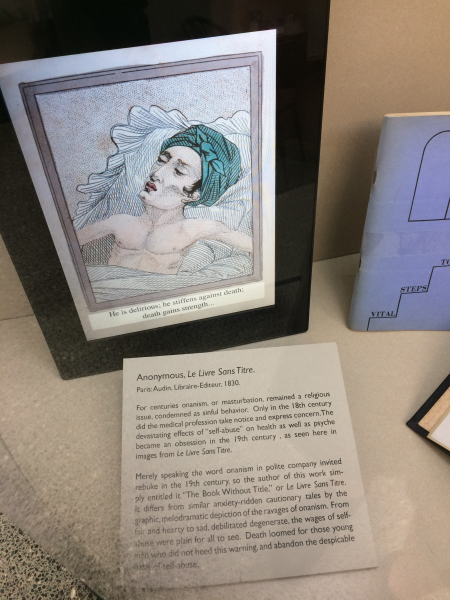
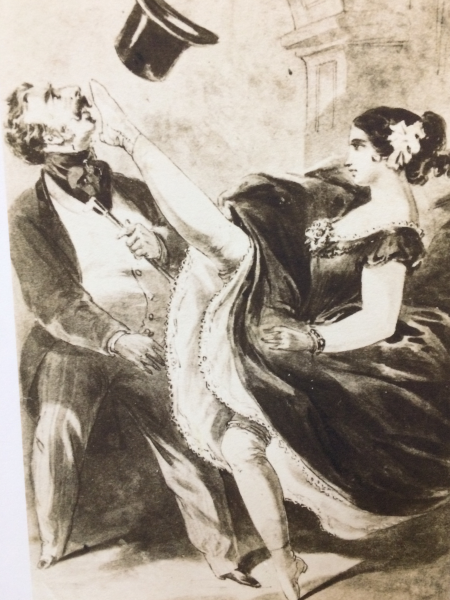
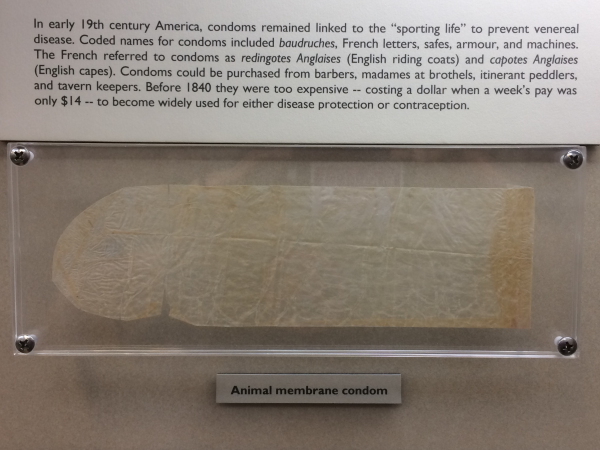
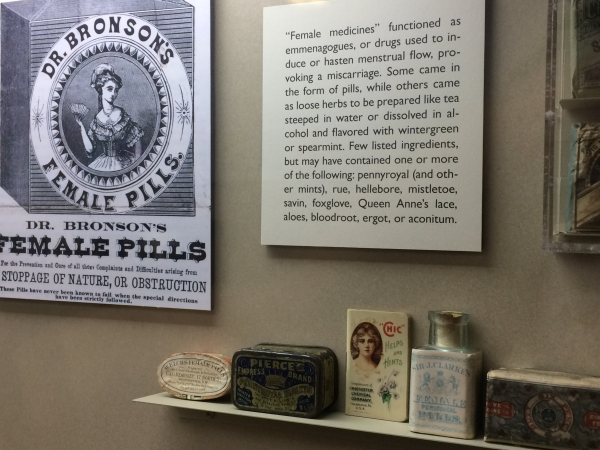
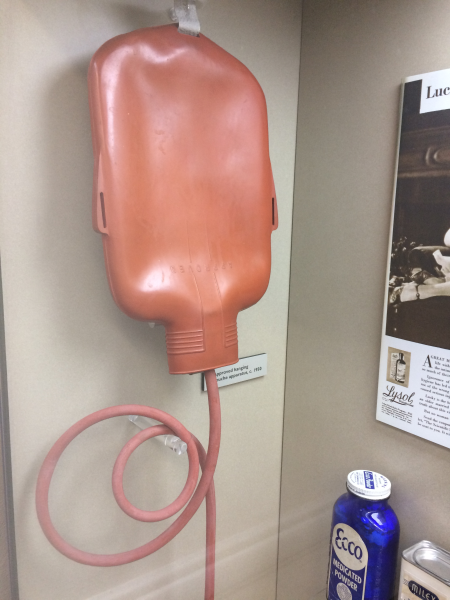
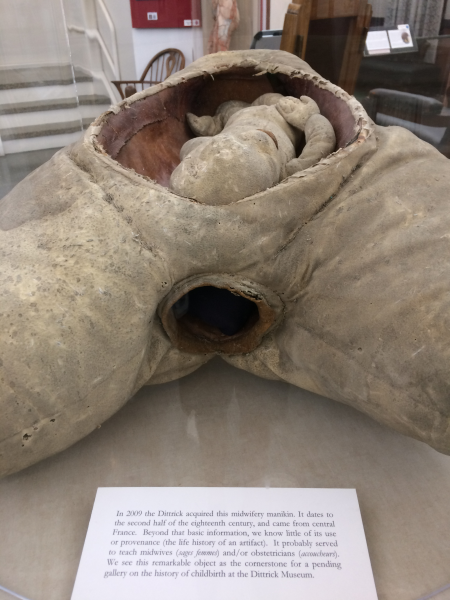
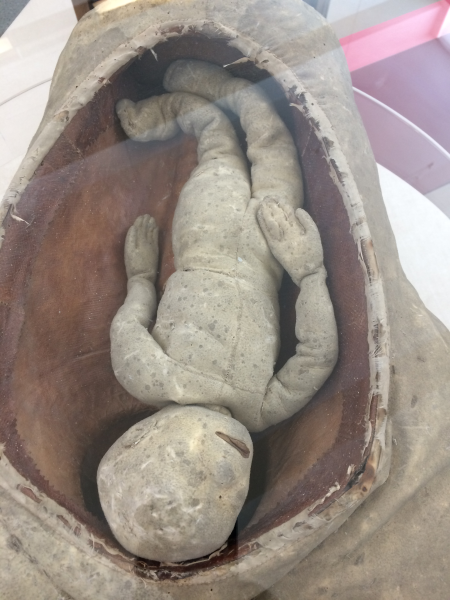
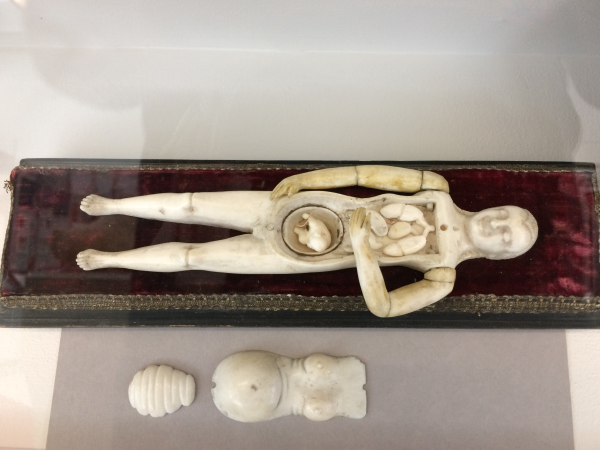
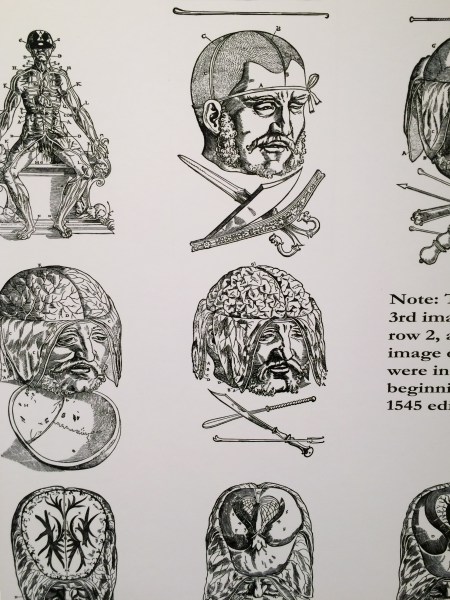
The Dittrick Museum of Medical History!
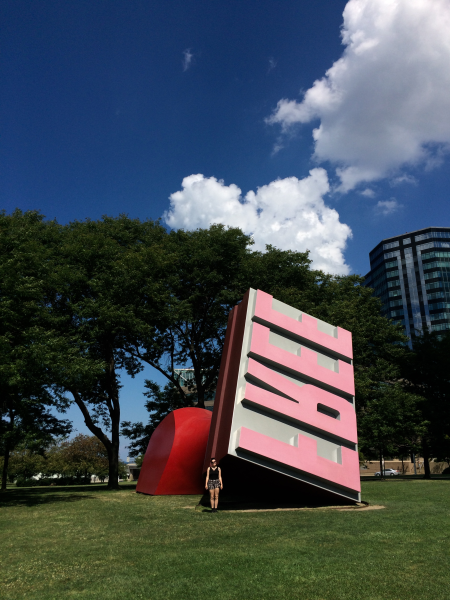
FREE STAMP (Alyssa for scale).

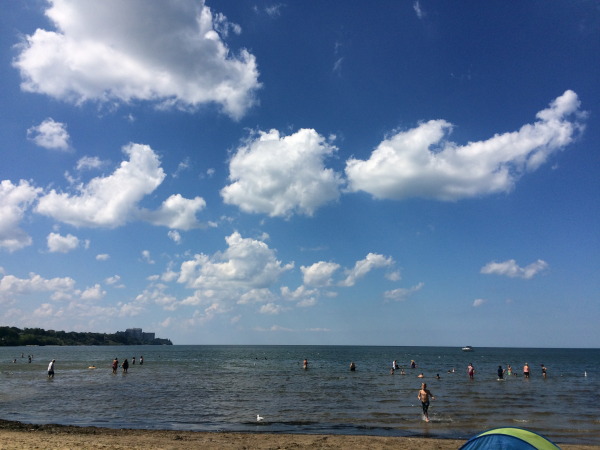

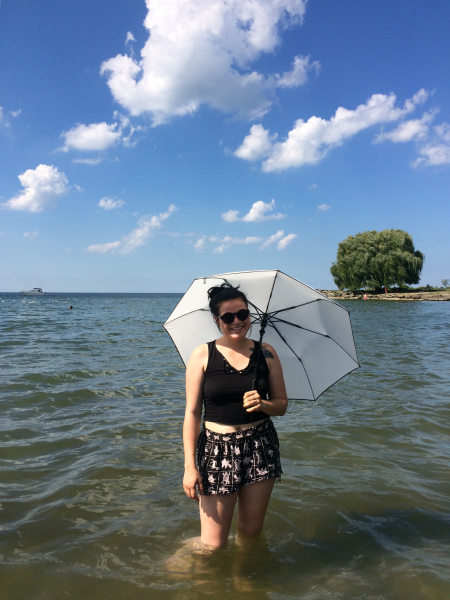
Edgewater Beach, and Alyssa trying to fake a smile even though she was miserable to be there!
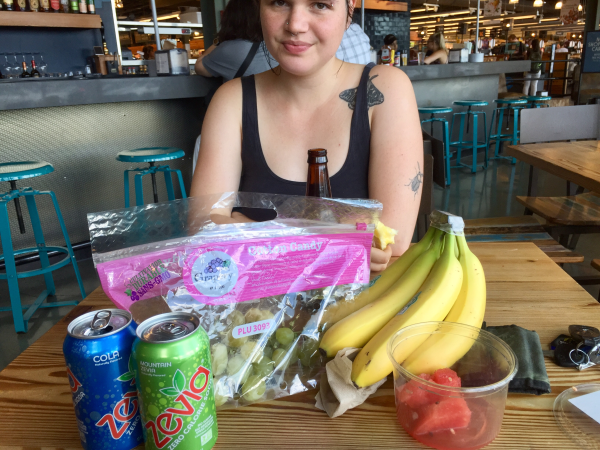
Whole Foods break!
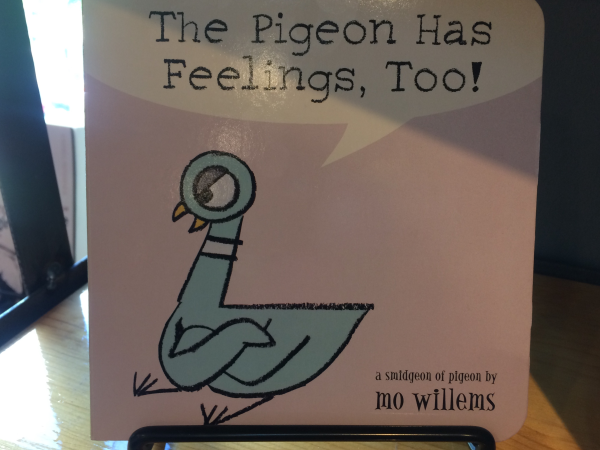
That's right!
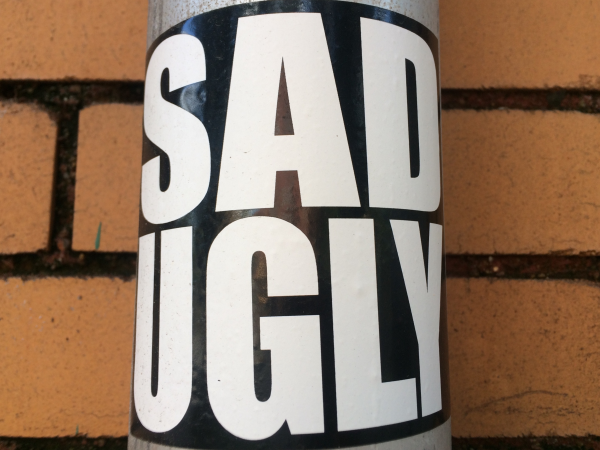
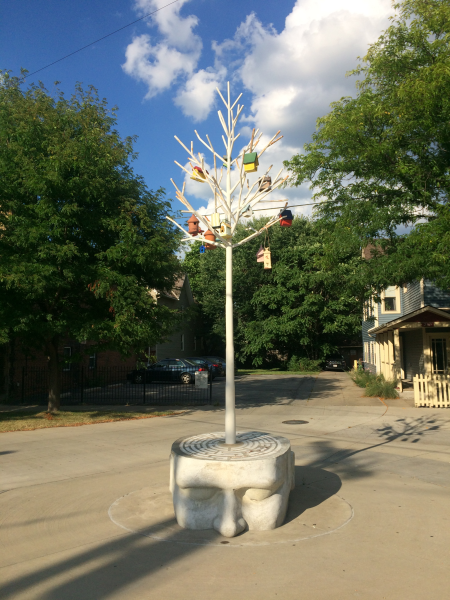
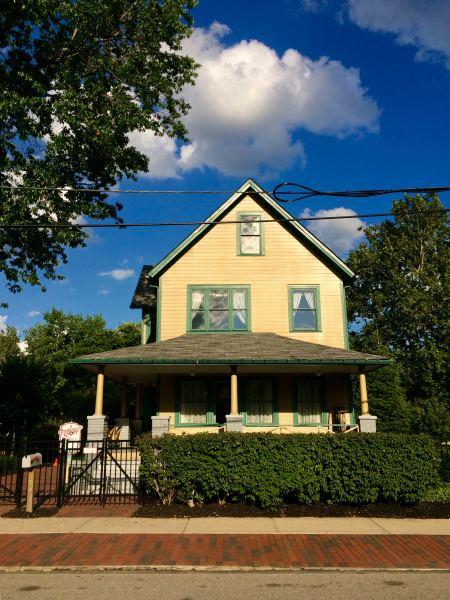
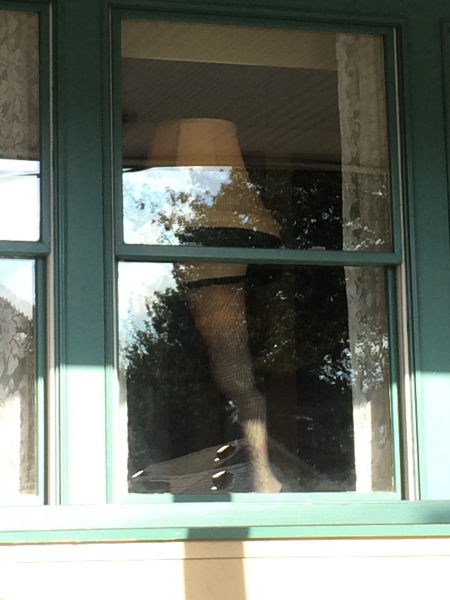
the Christmas Story house!
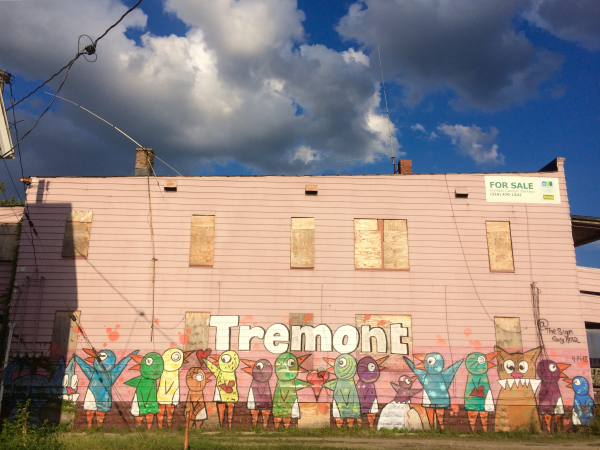
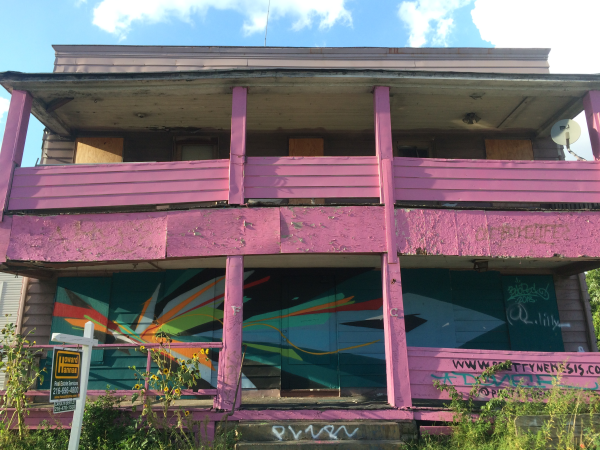
An abandoned house painted fuchsia with one side covered in these cute bird characters we'd seen all over the city.
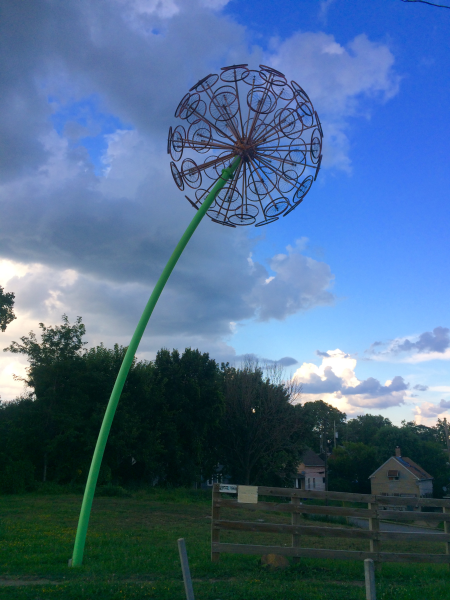
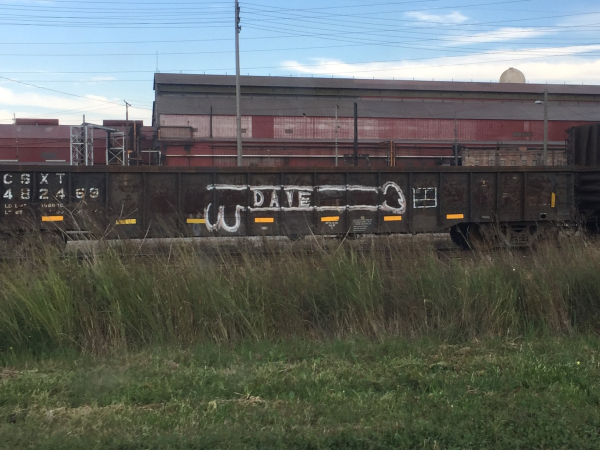
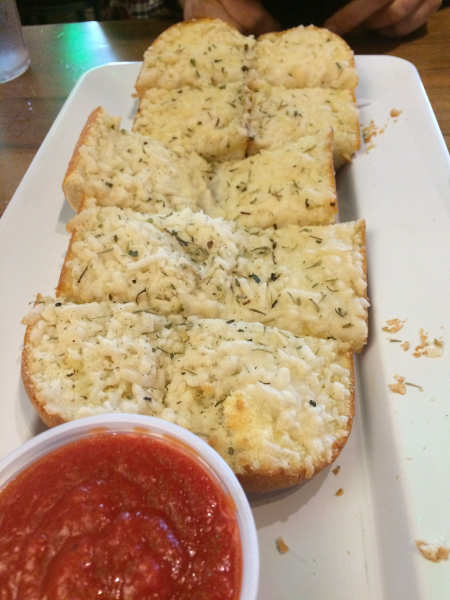
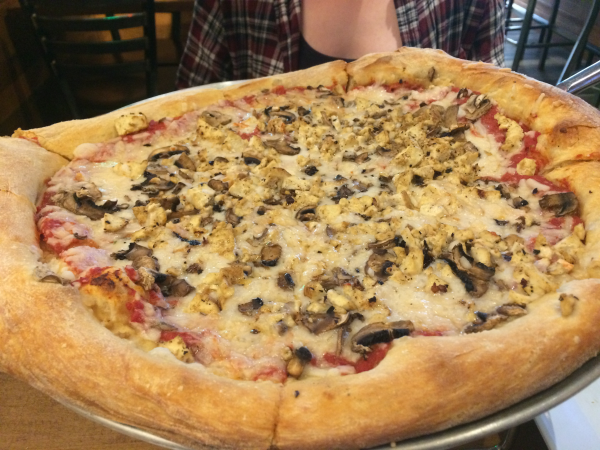
Mellow Mushroom!
DAY TEN
Thursday, September 6th
Thanks to our handy car ceiling fan we'd found in a dumpster and a pleasantly cool morning, I managed to sleep in until almost 1. We finished the drive to Detroit and stopped at a Starbucks to do our usual loitering and organizing. The part of the city we were in was the part that would mislead any unfamiliar visitor into thinking Detroit was like any other city. There were skyscrapers, a Whole Foods, hugely popular electric scooters everyone was riding, a casino; but this pocket was the exception to the rule, as we would eventually find out.
Our first stop, conveniently up the road, was the Institute of Art where we marveled at a locally notorious mural commissioned by the Ford Motor Company that wound up being a subtly scathing indictment of capitalism and industry under the guise of the desired tribute to the Detroit motor industry, which as we all know now would inevitably kill the state. Thankfully, we were able to just walk by employees and security with such nonchalance and confidence that no one bothered to ask us to pay for entry. The artist who created this masterpiece was named Diego Rivera, husband to Frida Kahlo, and he was ironically paid to do it by the very people he was critiquing in 1932. He creatively wove together a detailed statement on the contradictory innovation and destructiveness inherent to capitalism and industrialization, and through his depictions in it made very clear how he saw the defeated workers breaking their backs to build things for their diabolical corporate bosses. His piece seemed to me to speak on how capitalism profits off of both creation and destruction--how we can manufacture great feats of human ingenuity, but at the cost of desecrating the natural world that gave us the resources needed to do so. It was one of the most awe-inspiring pieces of art I’d ever seen in real life. While gazing at it and taking it all in, I had to overhear some middle-aged white liberal woman explain it to her friends, seemingly missing the point completely, and also see a young girl strike a sexy pose in front of one wall of it while her friends took pictures with their phones. Outside was the beautiful staircase fountain being overlooked by sculpted humans, including the famous "Thinker" by Rodin. We also saw orange Dead Man’s Finger mushrooms growing underneath a tree on our way back to the car.
We drove several miles into parts of Detroit I would imagine most tourists would never dare go. I wanted to explore some abandoned buildings I’d read about online, which required us to get pretty deep into the ruins of a city devastated by the fickle and exploitative industries that once caused it to superficially thrive. Every block was crowded with auto shops, car washes, cheap convenience stores selling fried foods, and churches; some were still open, many were defunct. Whether alive or dead, the theme of that part of the city was clear and seemingly timeless. It was sad how capitalism could eat away at a beautiful place so malignantly. The abrupt shifts between upper-middle class neighborhoods and extreme poverty were disorienting. It was everything I grew up surrounded by in Schenectady, but multiplied exponentially: check cashing places, laundromats, liquor stores, religious congregations--all there very strategically to prey on the most financially and intellectually vulnerable class of people in America. Billboards echoed this with their pro-life causes and military advertisements. Honestly, it was the densest population of inner city churches I’d ever seen anywhere else in America. Residential blocks had large, beautiful homes, but many of them were falling apart and bursting at their wooden or brick seams with low-income families, while others were in such states of disrepair that you could see through to the other side from the front porch. Many had collapsed into themselves. You could tell many of these neighborhoods had once been in an entirely different economic situation. We also saw a lot of black squirrels.
Among other places, we stopped at an abandoned ice cream shop topped with a giant cow head that was seen being shot at with a paintball gun by Eminem in the film 8 Mile. We stopped at the Grande Ballroom, which was sadly too boarded and locked up to get into. It opened in 1928 and throughout its complicated life housed many things, mostly music, changing from a jazz club to a big band dance venue to an outright dance club by the '50s and a counter-cultural hub for fans of rock and punk up until its demise in 1972. Its midlife was as a roller skating rink and a mattress storage space because it happened to be a sober venue, which was obviously as uncool then as it would be today.
We also tracked down St. Agnes Church, which sat at the corner of a entire block comprised of neighboring abandoned buildings, fenced in, locked up, and guarded by a security vehicle paid for by the new predatory property owners from New York City, who were scooping up presumably cheap real estate. Fully constructed by 1924, it was at one point a very heavily populated congregation in its neighborhood, and next to it was its own Catholic school for girls. In 1967, a police raid on a bar lead to a full-on rebellion by patrons, and when all was done an entire block was more or less burned down, save for St. Agnes. This incident would later notoriously be known as the Detroit Rebellion and the 12th Street Riot, and would be considered the bloodiest of the 159 race riots to take place during the "the Long, hot summer of 1967". Though left unscathed by fire, the after-effects of that night destroyed the neighborhood as a whole. People began leaving, eventually meaning the church couldn’t stay open, and by the mid-'80s it was sold, but ultimately never touched again other than by vandals and scrappers who gutted it. We walked around the entire place, but found no easy entrance before the security guard drove up and asked us if we needed something. I told him we were trying to find a way inside and asked him if he knew how we could. Unsurprisingly, he wasn’t helpful.
We were able to waltz right on into the Abundant Life Christian Center, which had been abandoned since a 2009 fire, through a hole in a boarded-up doorway in the back of it. The congregation had already been dwindling since the '50s and '60s, with its peak being in 1939. Now it sat in decay among even more commercial and residential ruins. We explored the entire building from top to bottom. It was absolutely fascinating and still very packed with remnants of its history. The stained glass windows were mostly smashed out.
On our way to and from the impoverished outskirts of Detroit, we’d noticed a section with a lot of murals. One in particular had stood out to us of a young black girl looking upward, either with hope or disillusionment, faded and taking up the entire one side of an abandoned brick building that may have once been public housing. Not expecting to pass by all of them again, we were excited by a second chance to get closer and maybe take some photos. By the time we got out of the car, we noticed a skinny white guy had since begun to black out the entire mural, likely so he could replace it with something of his. This basically served as a perfect representation of the Eastern Market area of Detroit, which we had unknowingly found ourselves in. At first, we were just walking around and admiring the murals and graffiti, some of which had been done by artists I was a big fan of, like Luke Chueh, Pat Perry, and Nychos. We weren’t sure why or how it had become this designated block of art until we neared the corner and saw a distillery with pretty white millennials drinking and laughing inside. The amplified live performance of a mediocre folk singer rang from their alleyway with lyrics that included a chorus name-dropping Pabst Blue Ribbon. A dude stumbled out to smoke a cigarette while we were tagging a dumpster and said to us, "Everything here will be totally different the next time you see it, I promise."
I responded, "Good," but he clarified, "No, not in a good way. Property value is going up and everyone is gonna have to leave here."
He was referring to the plight of the youthful businesses owners that had started its gentrification, not the impoverished residents. From there, we noticed the bougie shops, Segway tours, artisan meat markets, and young white women in yoga pants walking tiny purebred dogs. It was a shame that capitalism made improving a neighborhood into a predatory business move instead of a genuinely positive change for a community.
It was nearing 7 and we knew our vegan restaurant of choice for the night, Detroit Vegan Soul, would be closing by 8, so we got outta there. We finally found some vegan soul food, my absolute favorite kinda food! We got southern fried tofu bites, the Soul Platter (mac and cheese, smoked collards, maple glazed yams, black eyed peas, and a cornbread muffin), the Catfish Tofu (cornmeal battered tofu, broccoli/corn medley, redskin potatoes and onions, and hush puppies), and a side of seitan peppersteak over rice. This place was incredible and had two locations in the city of Detroit. We loitered at a Whole Foods until they closed, and then drove a half hour outta town to a reliable Flying J truck stop. There weren’t many hospitable options back in Detroit for parking and sleeping.
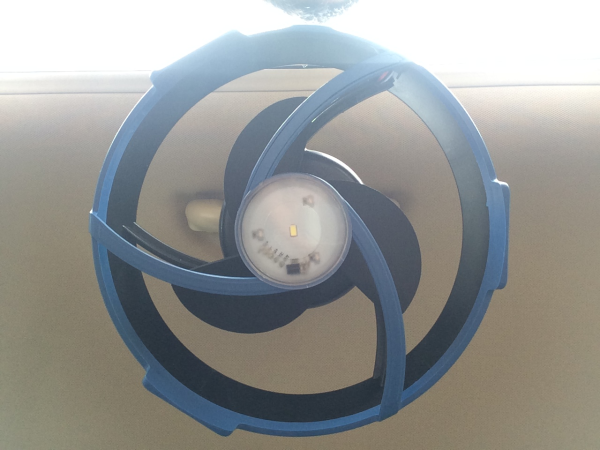
This overhead tent fan that ran on double-D batteries was a real lifesaver.
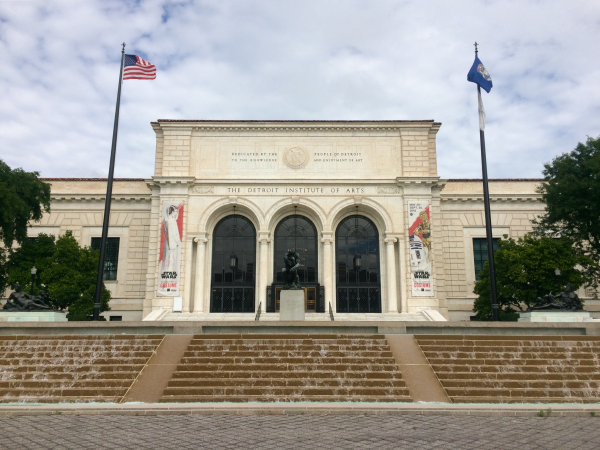
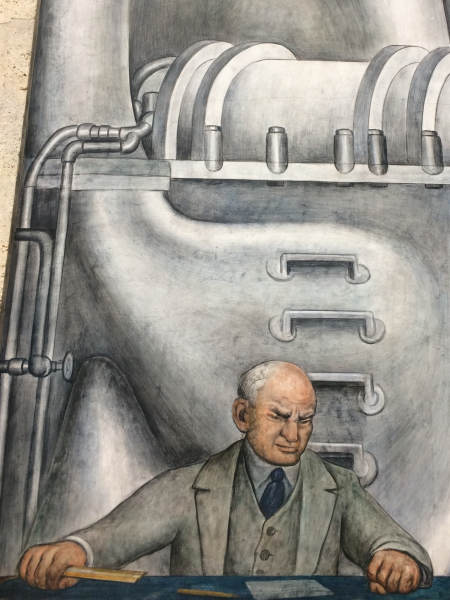
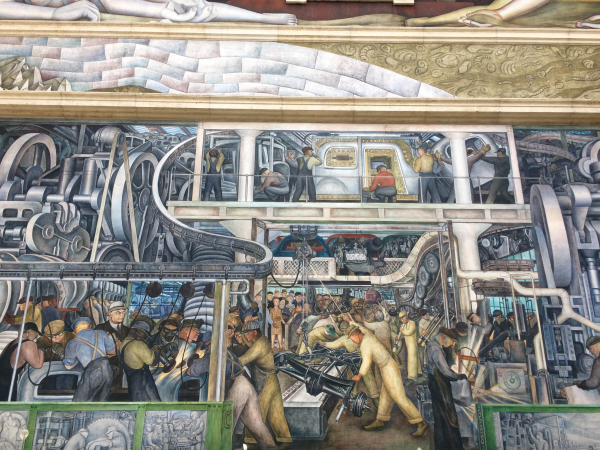
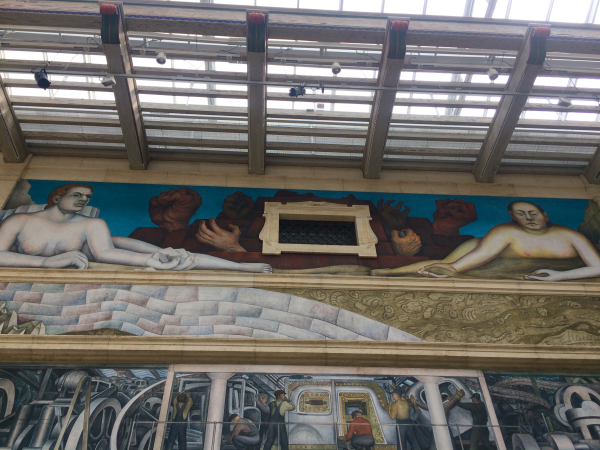
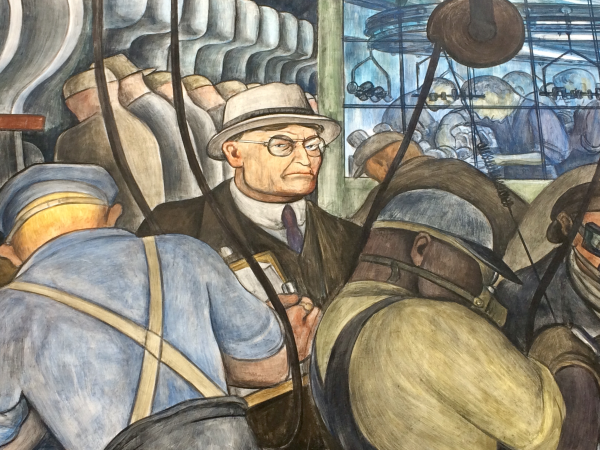
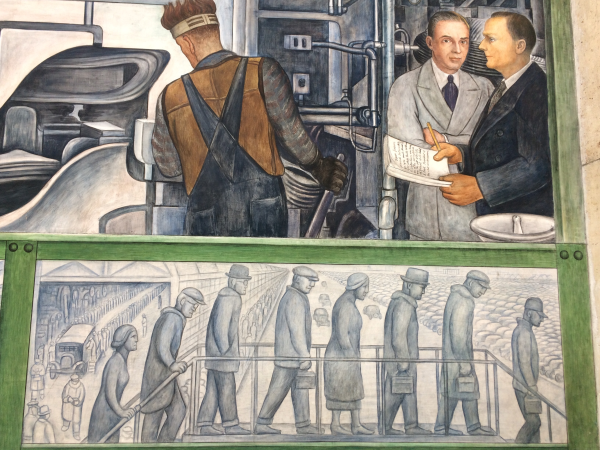
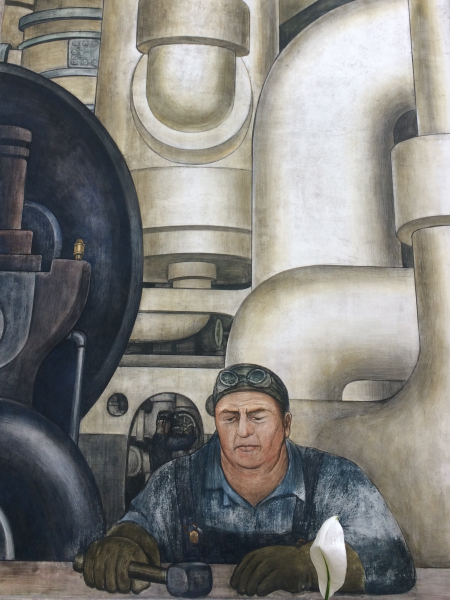
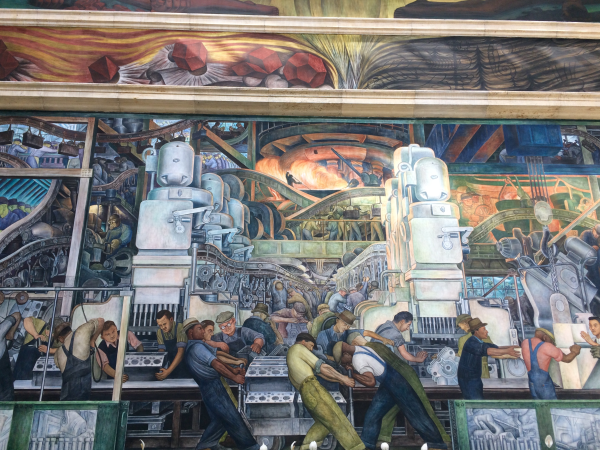
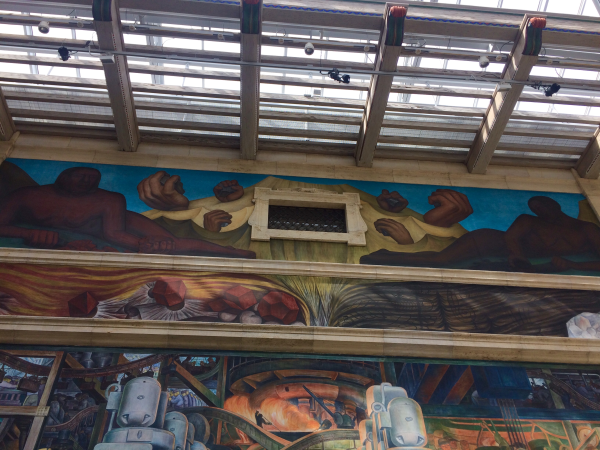
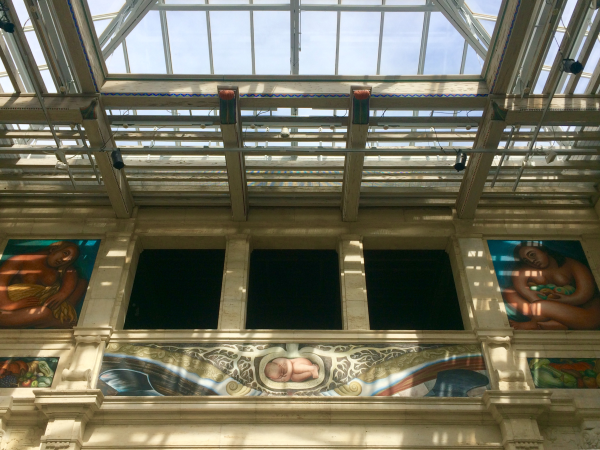
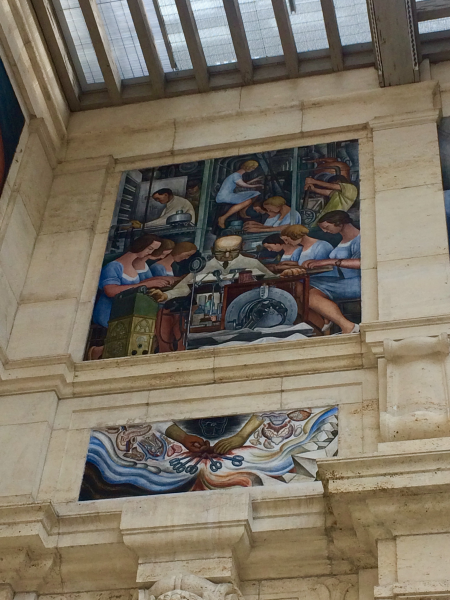
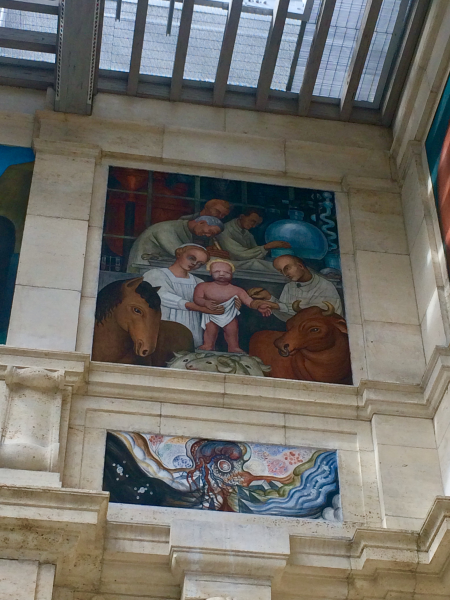
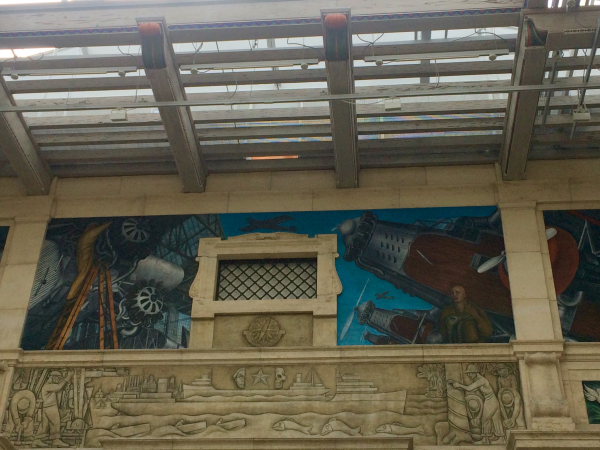
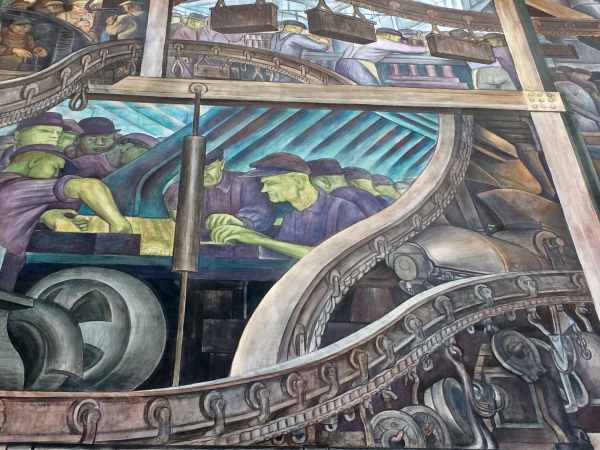
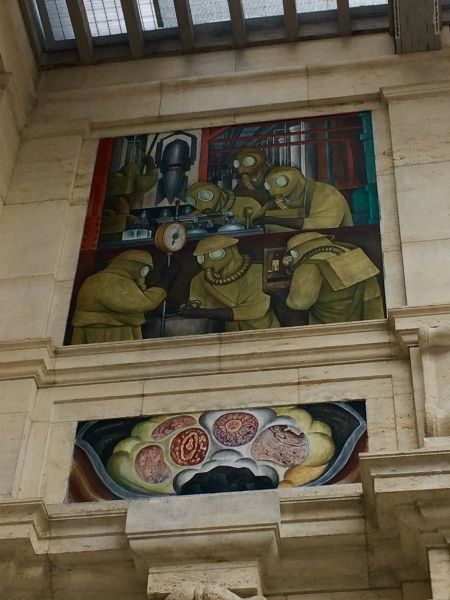
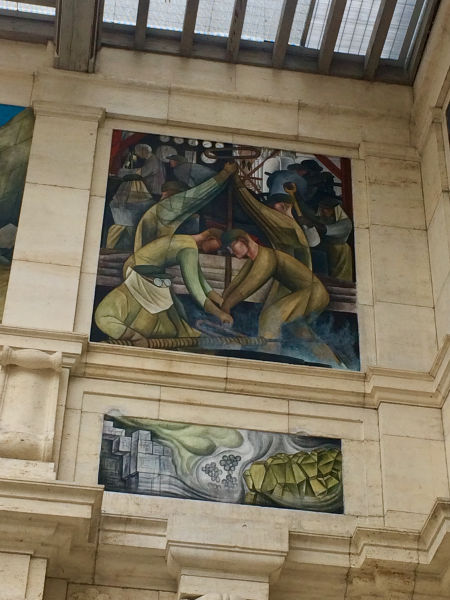
The Institute of Art and Diego Rivera's stunning mural.
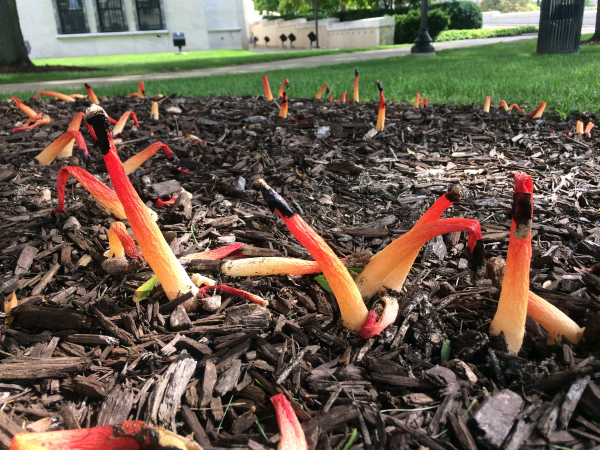
(Dead Man's Fingers)
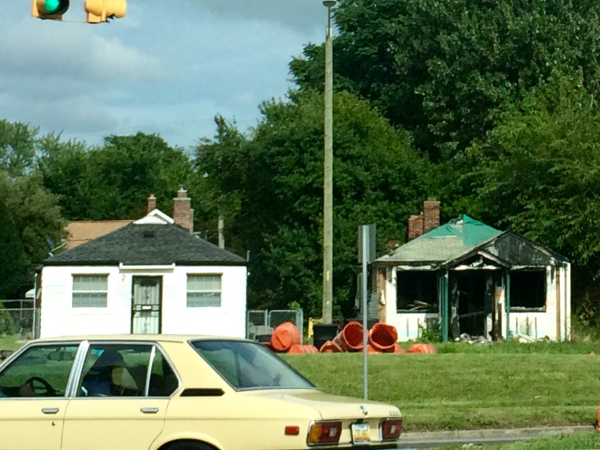
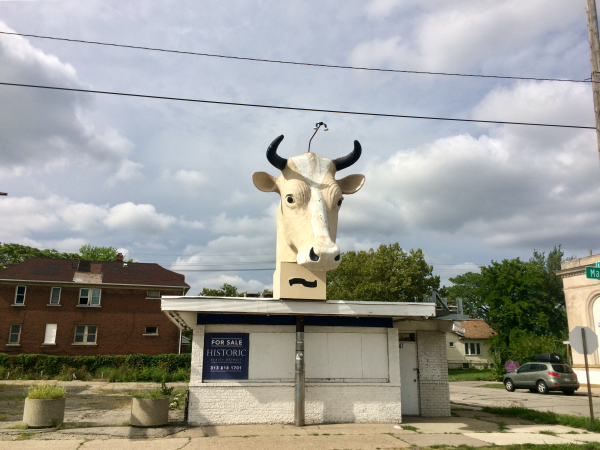
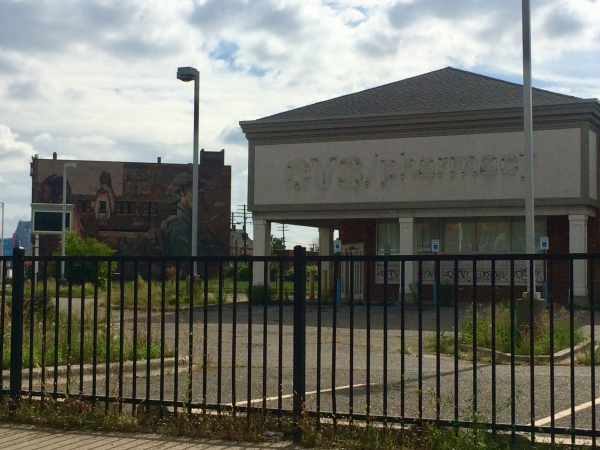
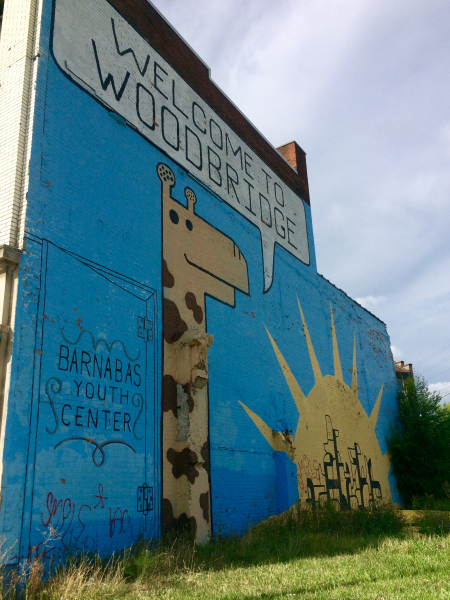
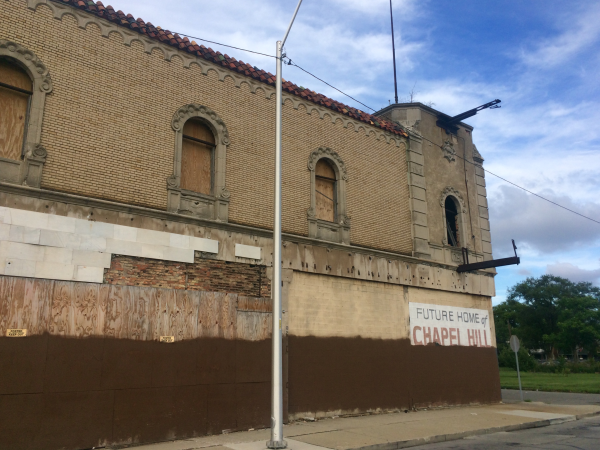
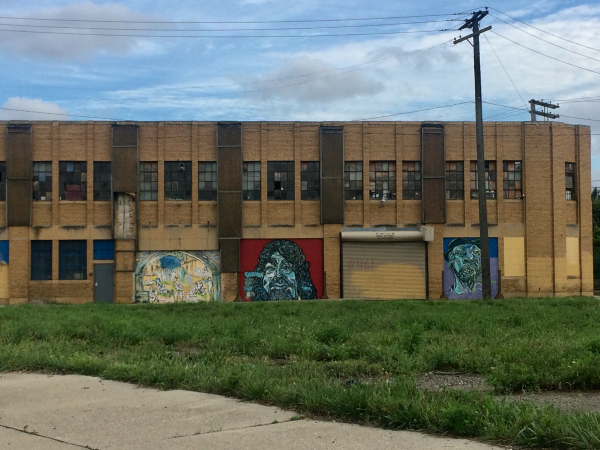
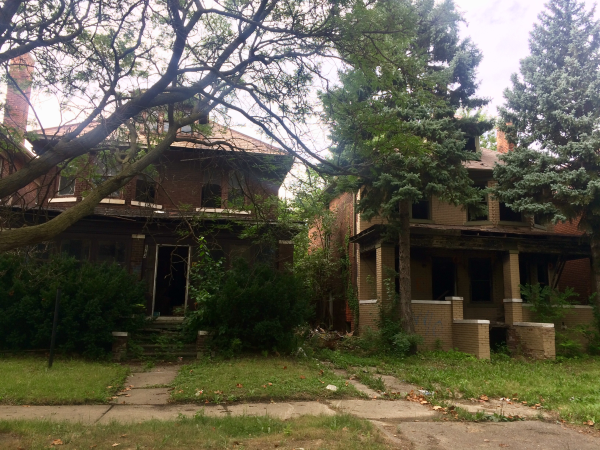
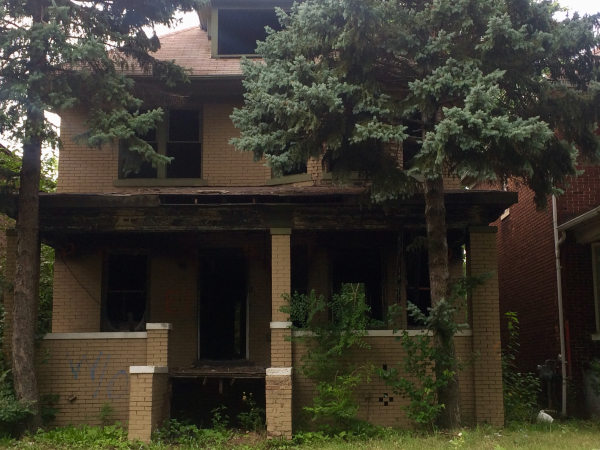
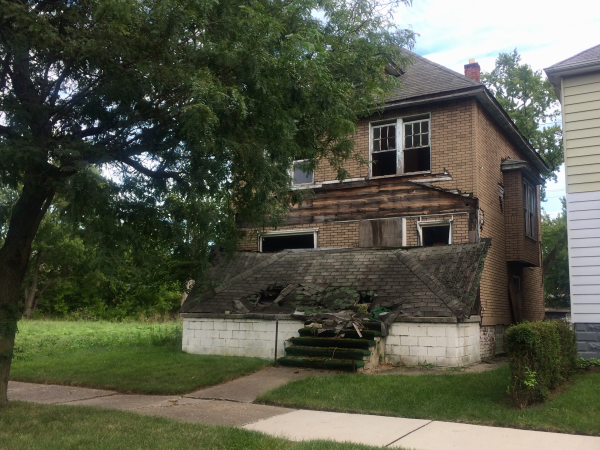
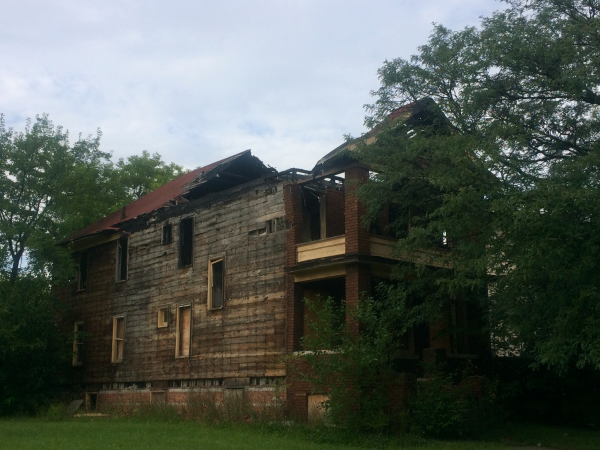
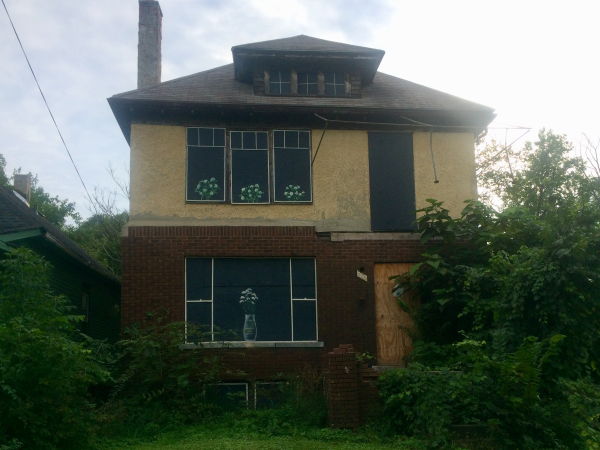
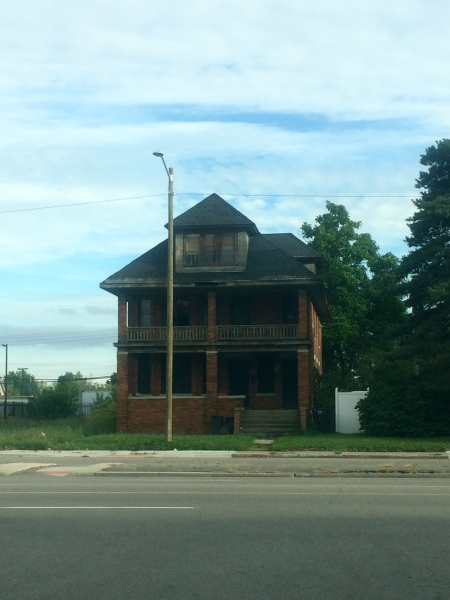
Ruins.
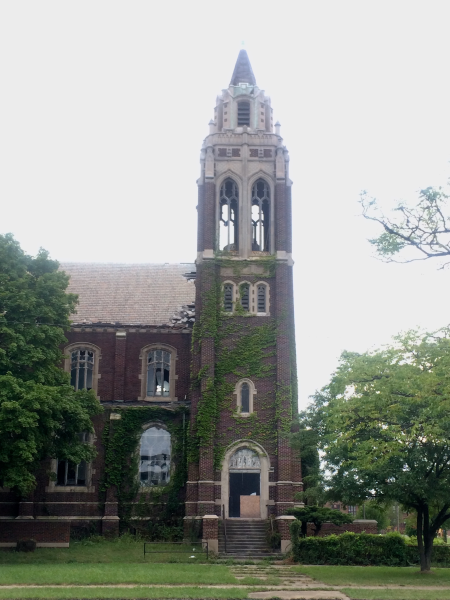
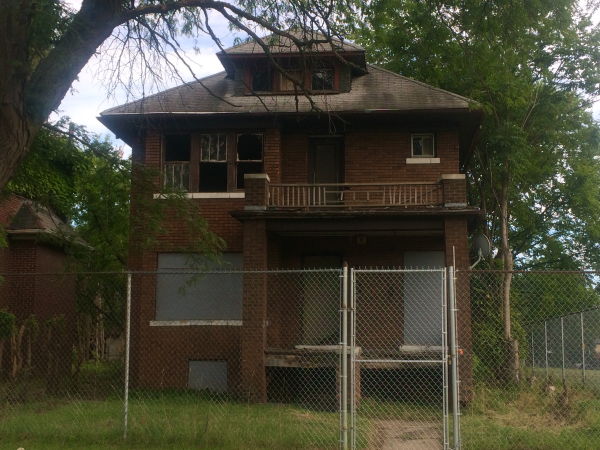
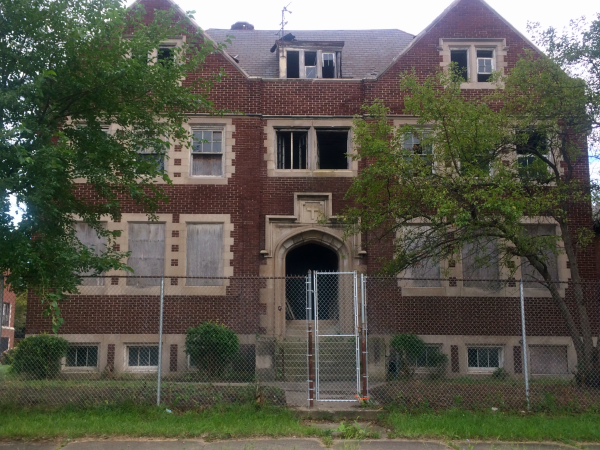
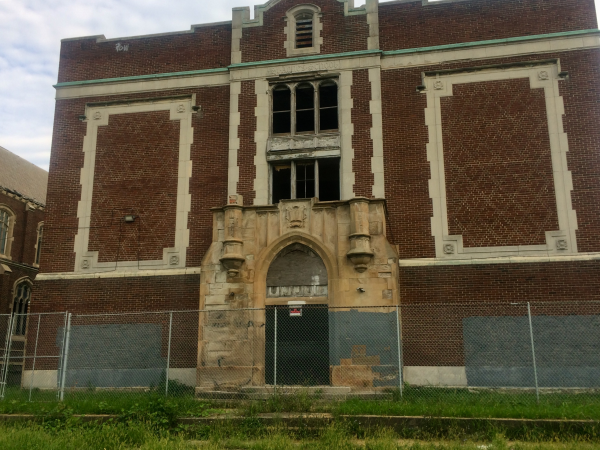
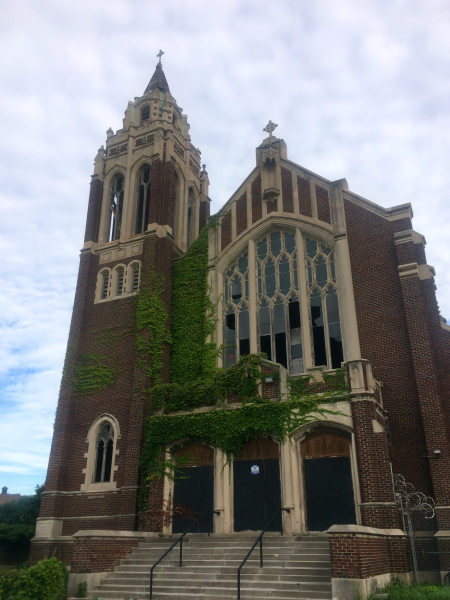
The abandoned St. Agnes and surrounding homes.
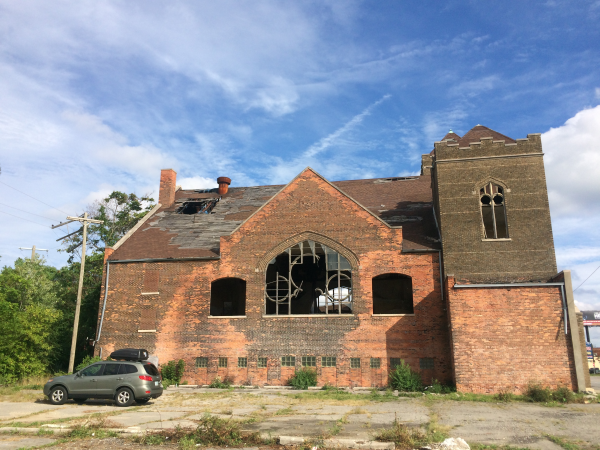
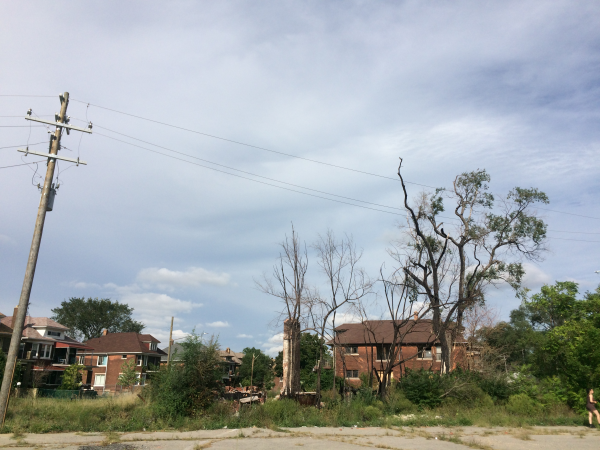
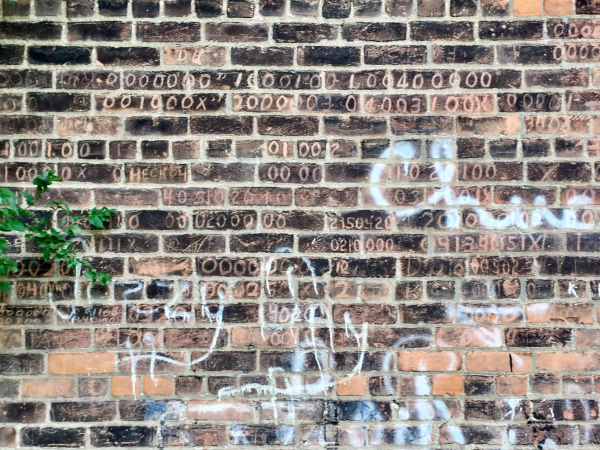
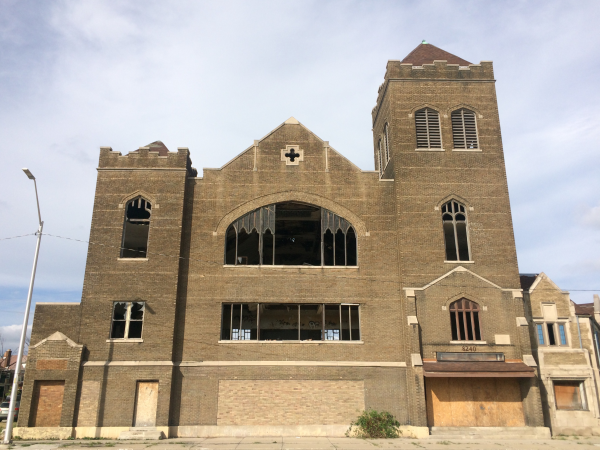
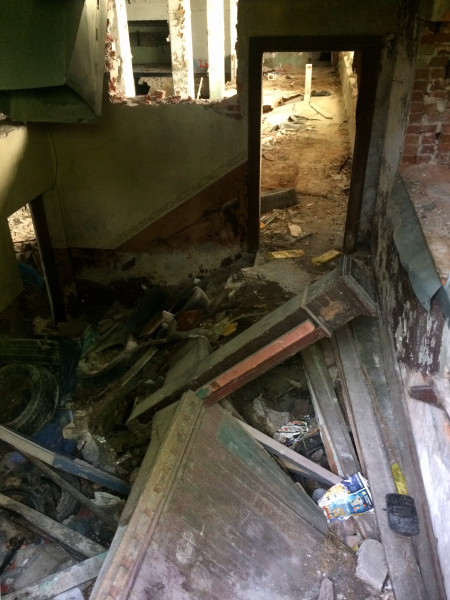
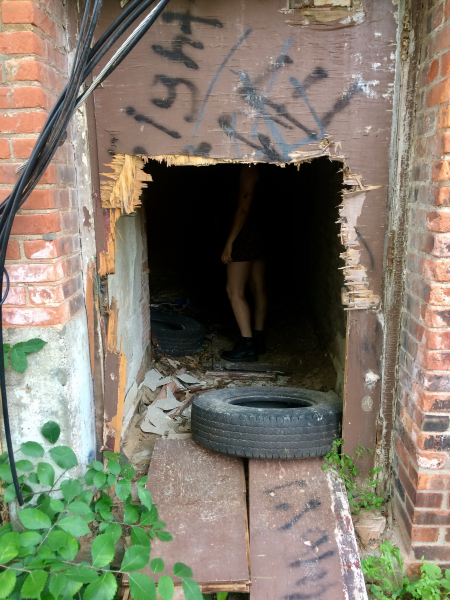
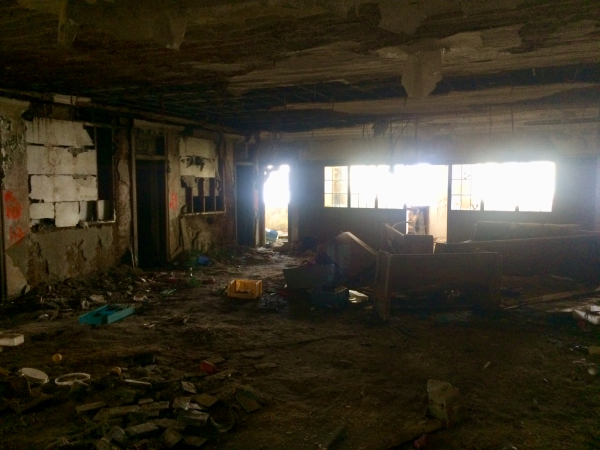
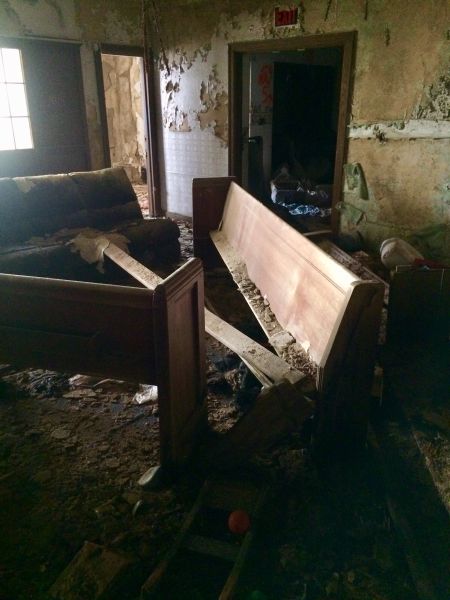
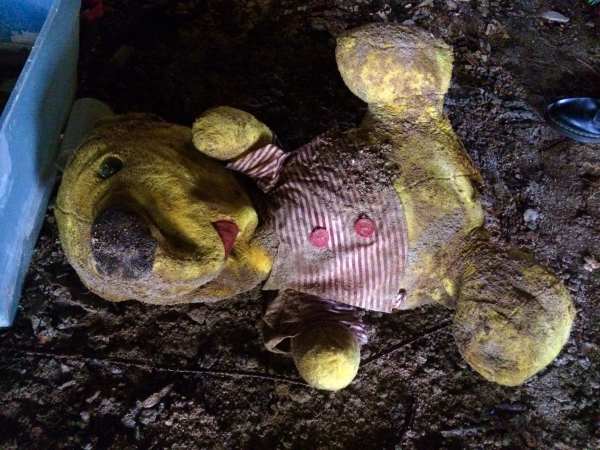
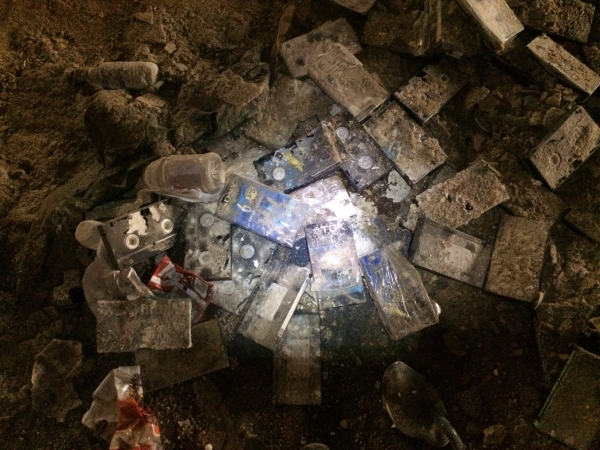
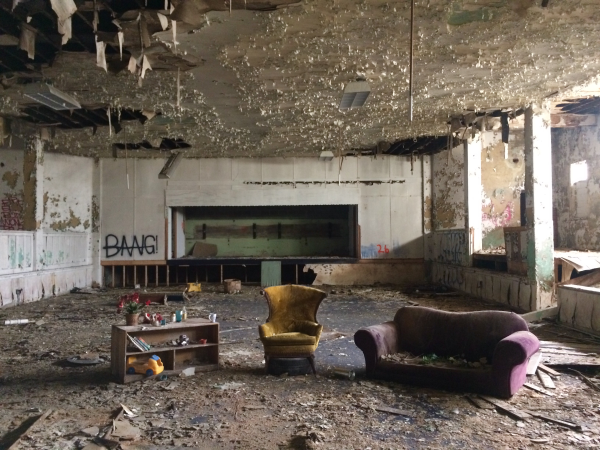
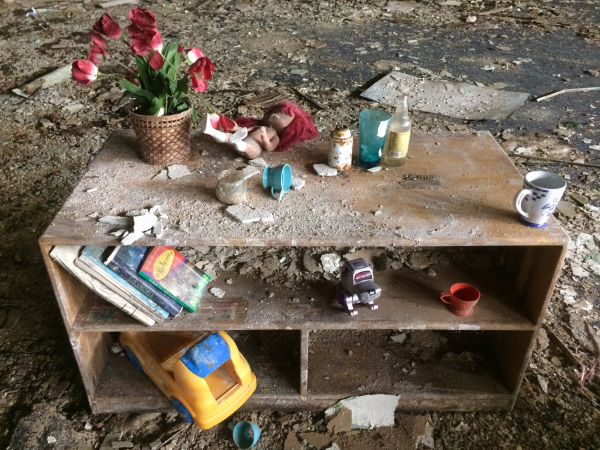

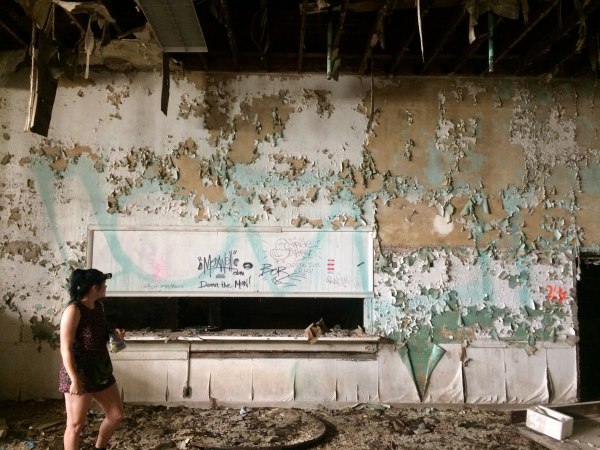
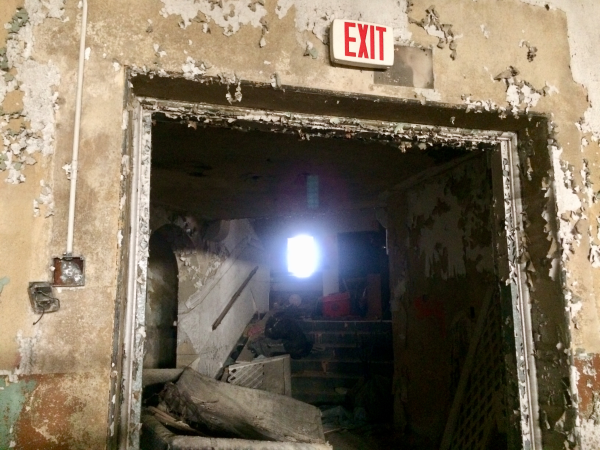
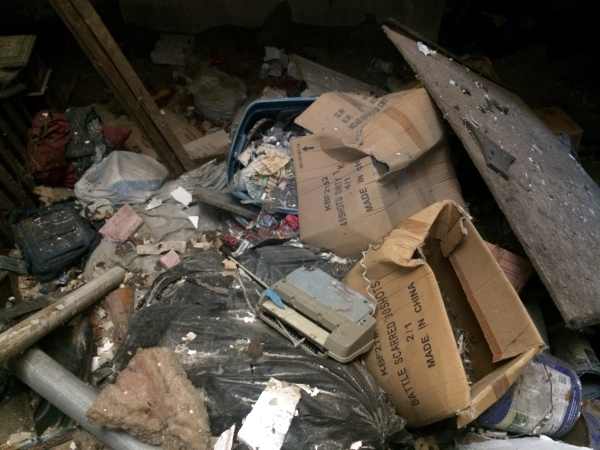
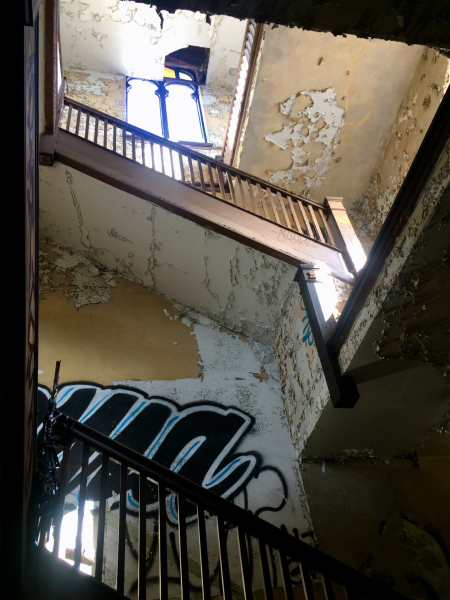
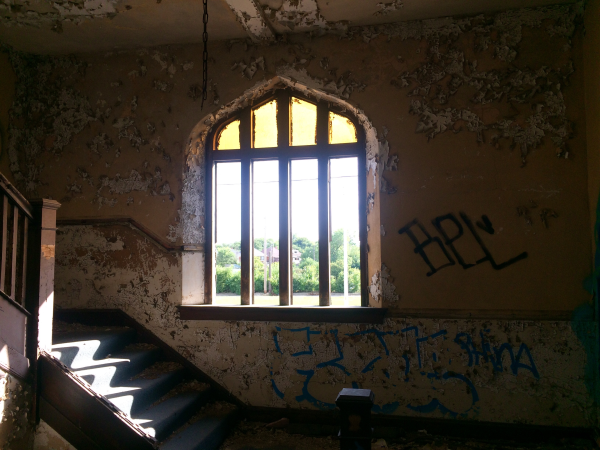
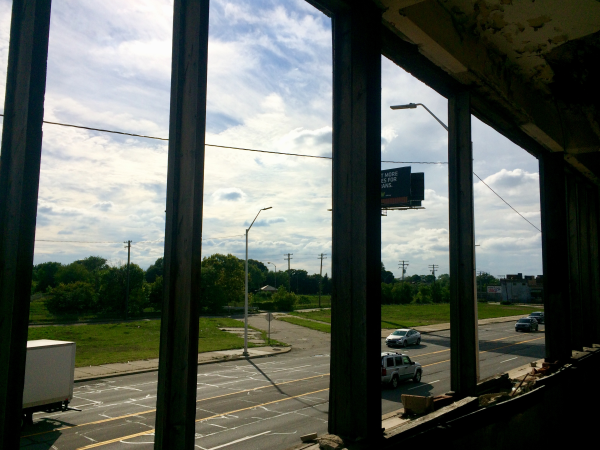
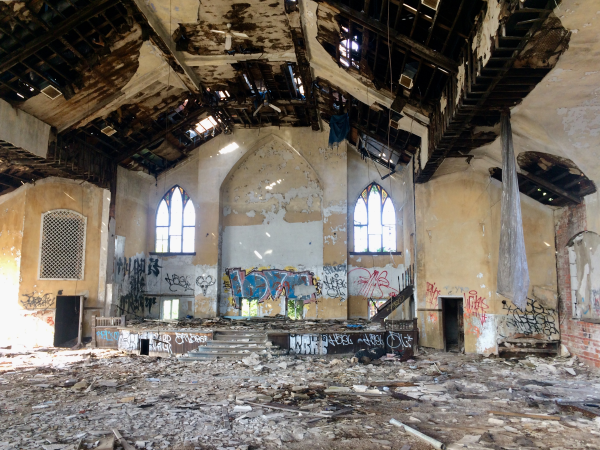
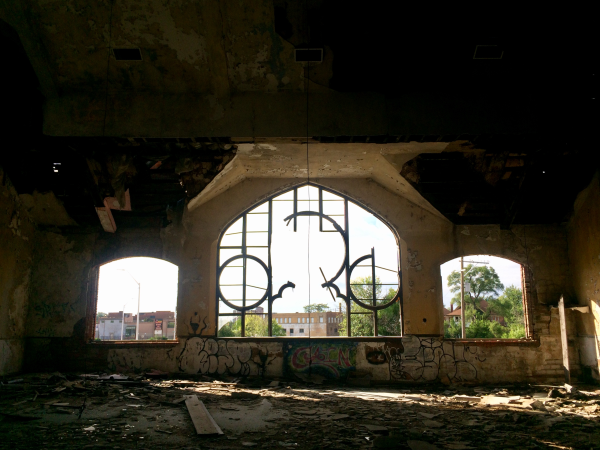
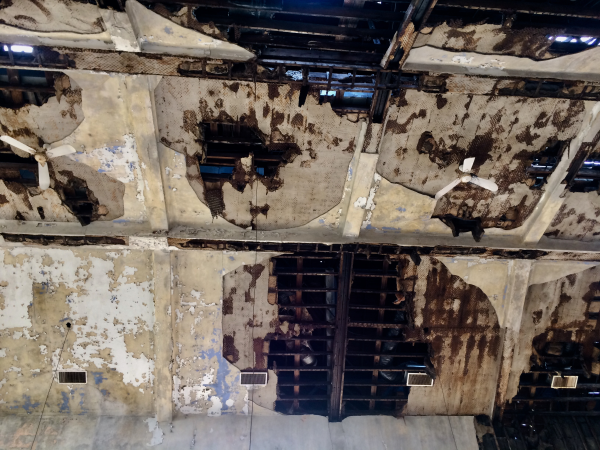
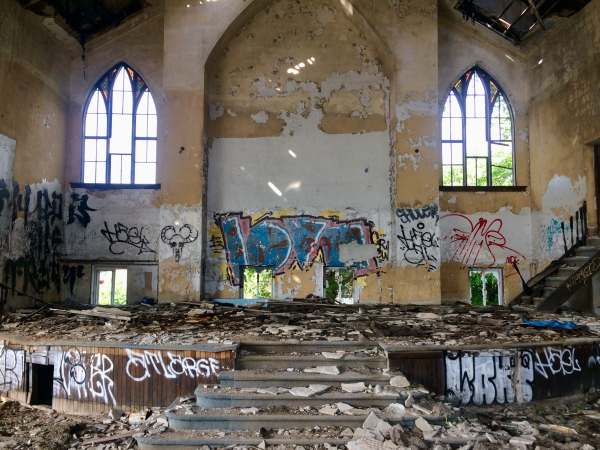
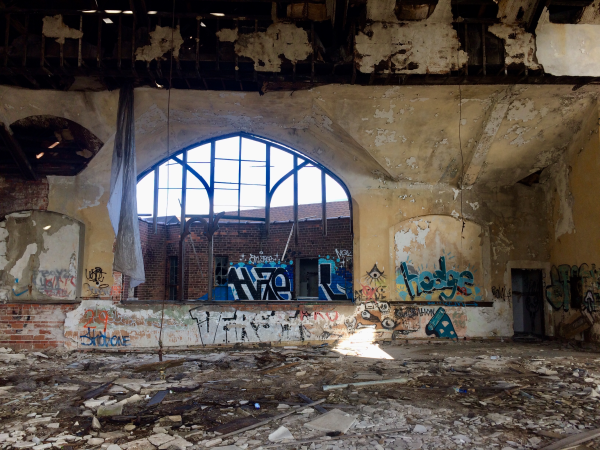
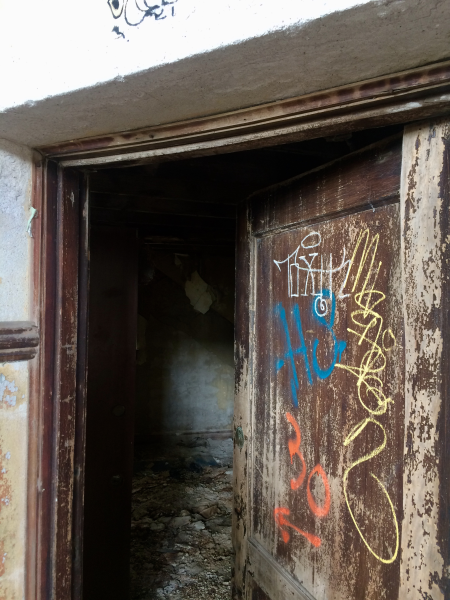
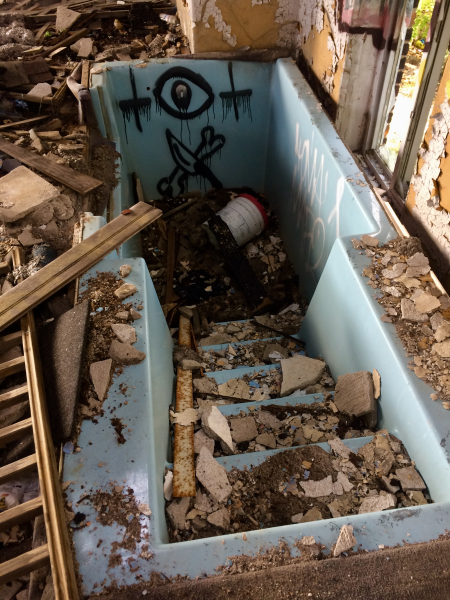
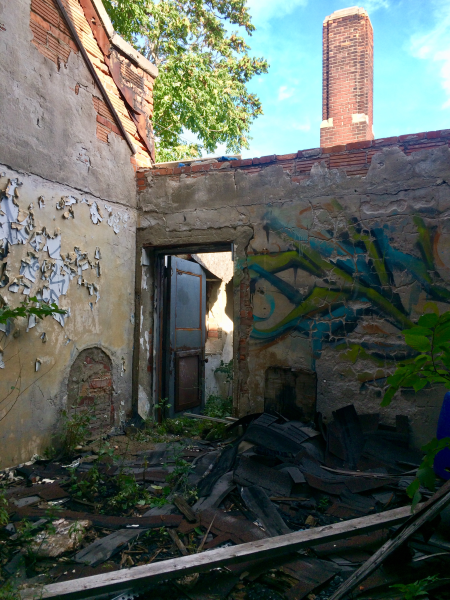
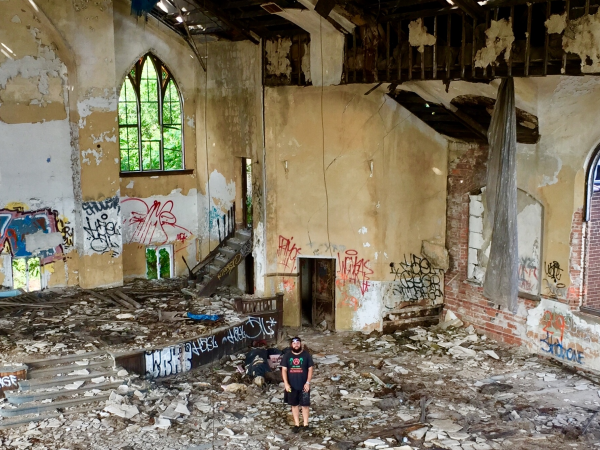
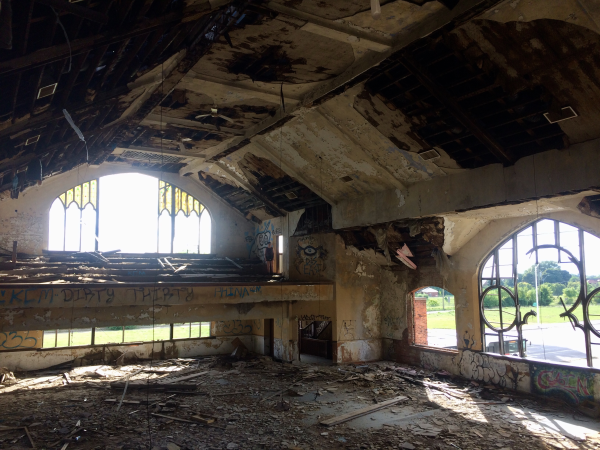
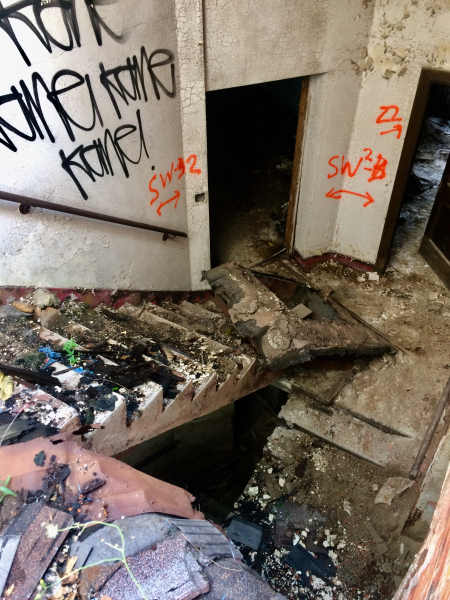
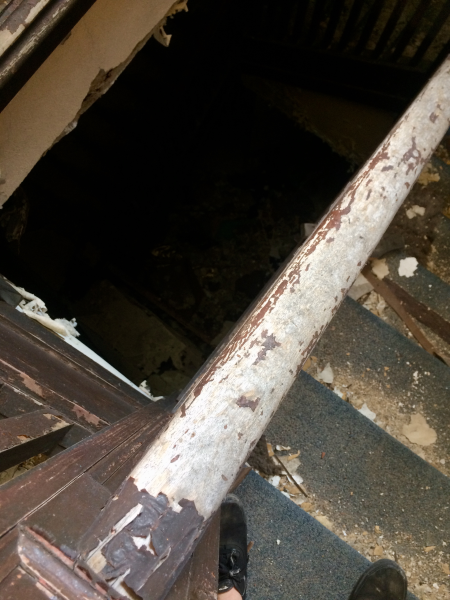
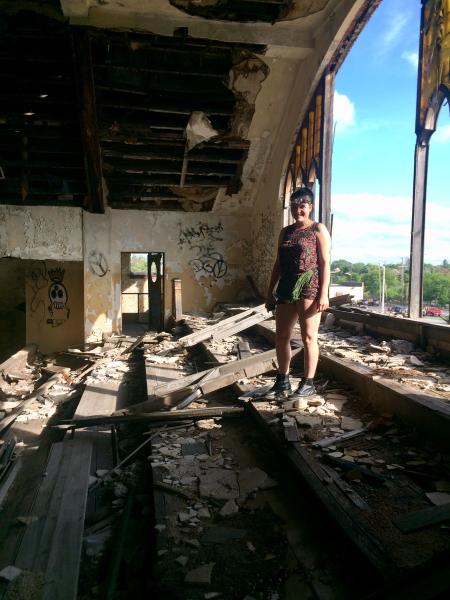
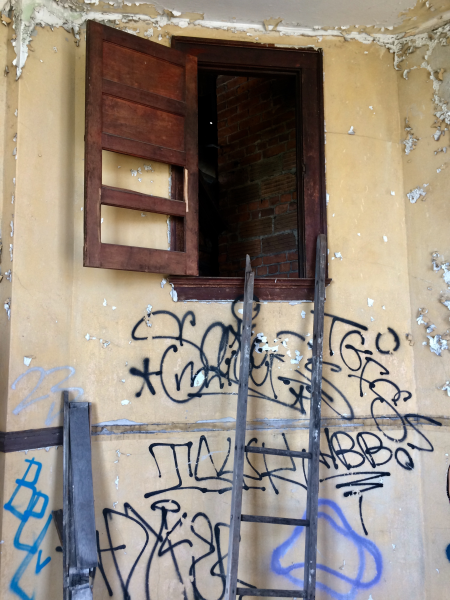
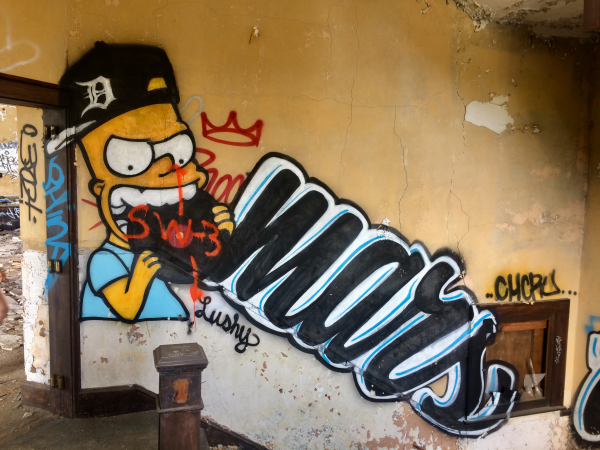
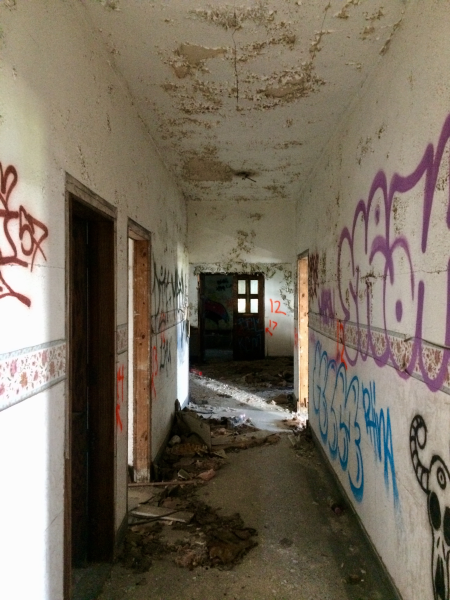
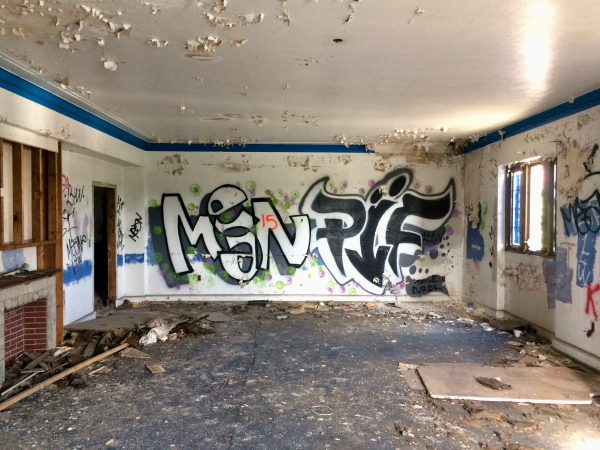
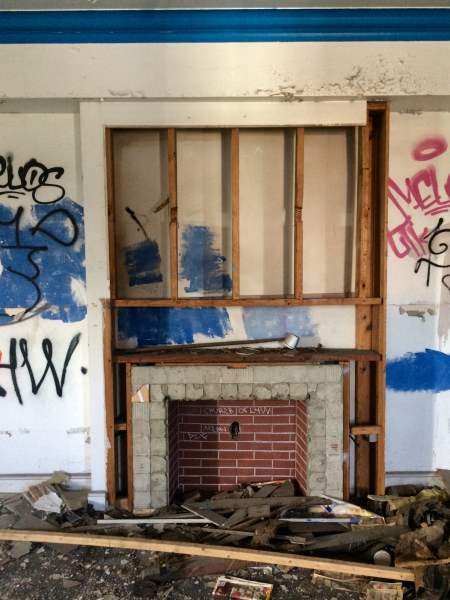
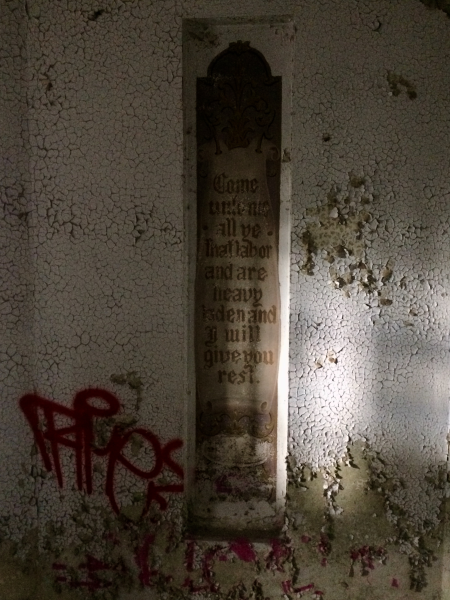
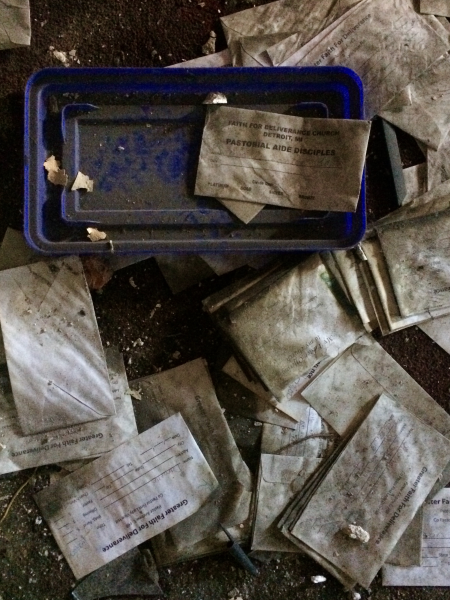

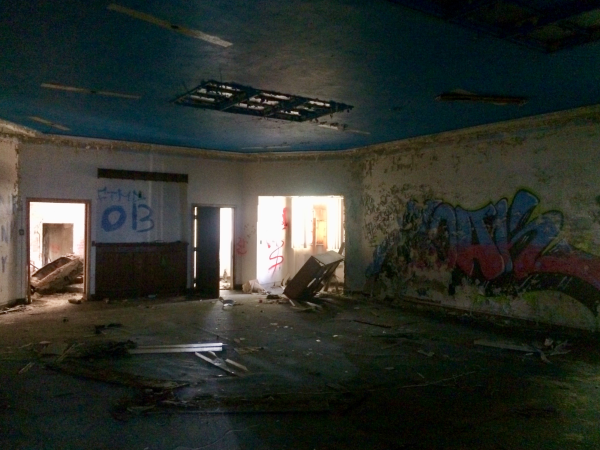
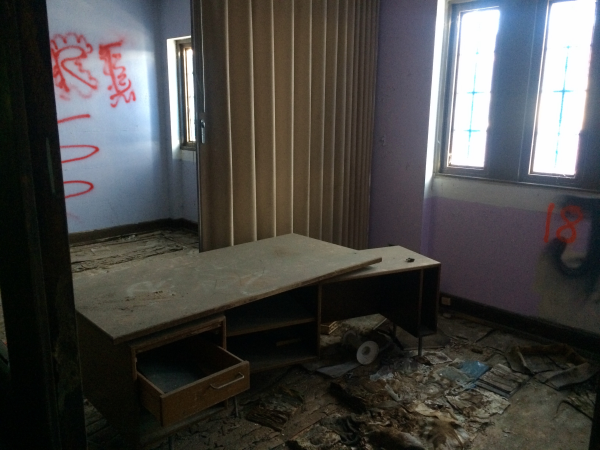
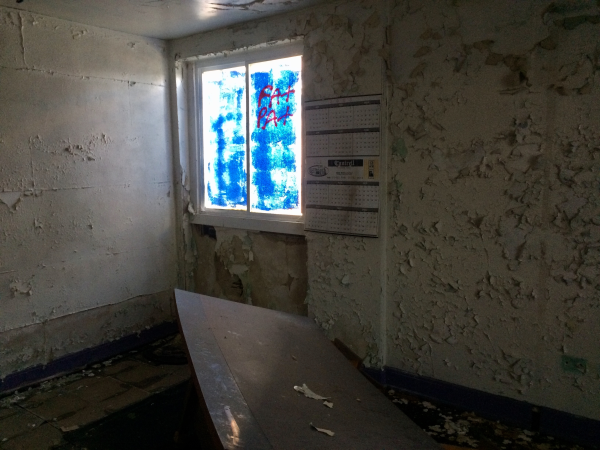
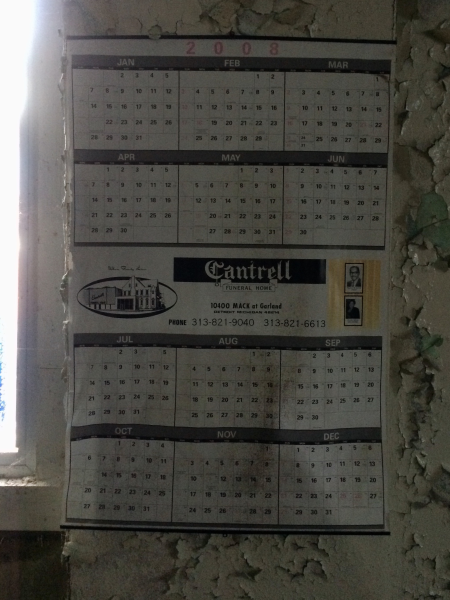
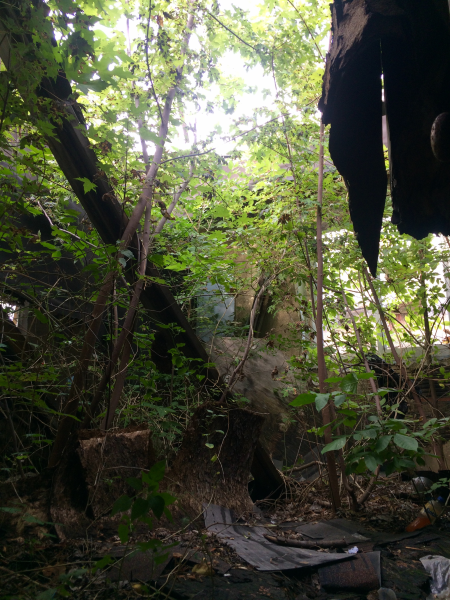
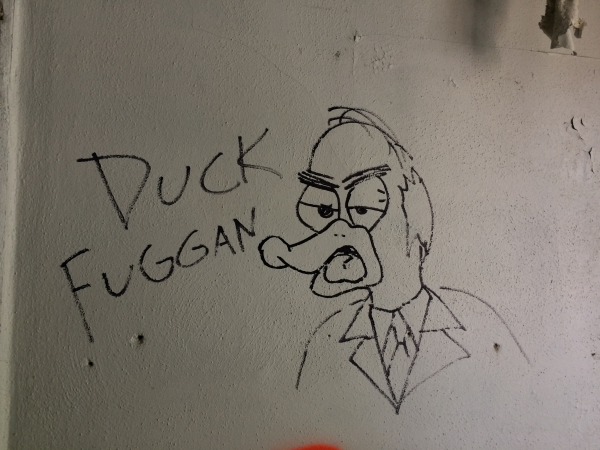
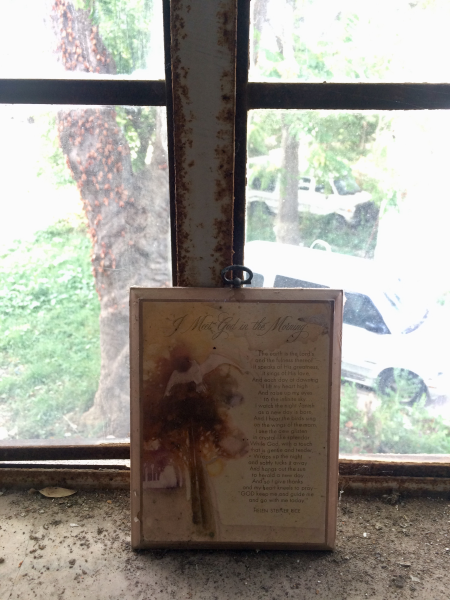
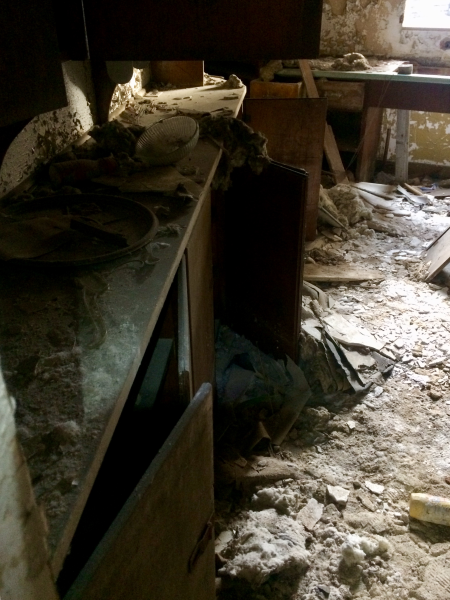
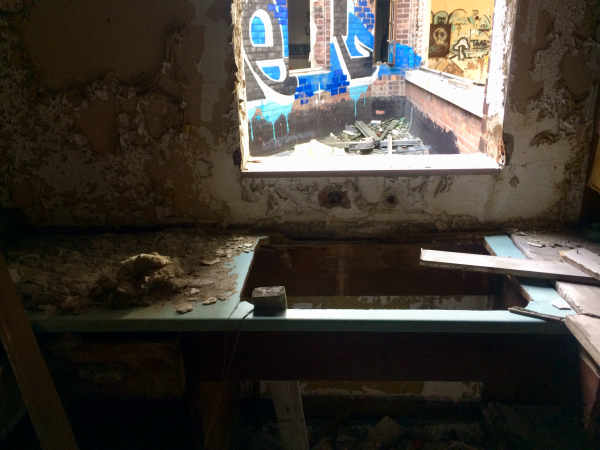
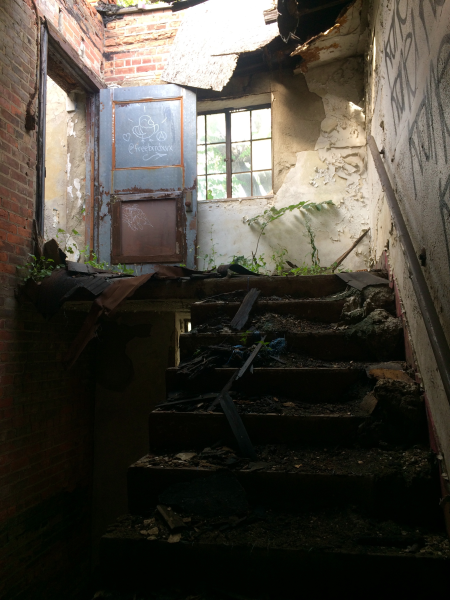

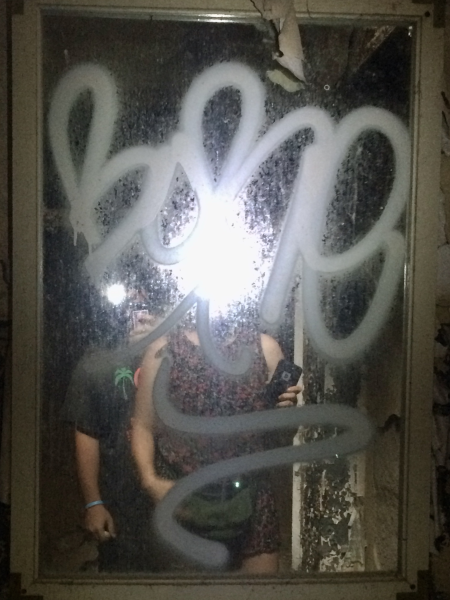
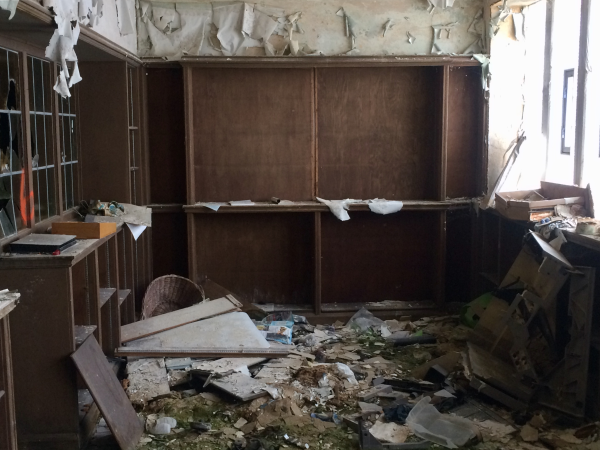
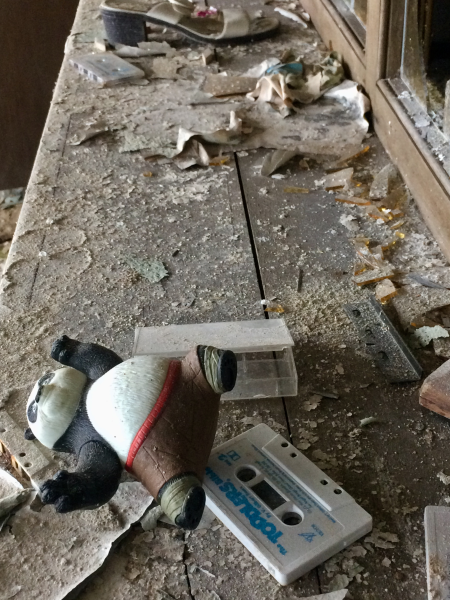

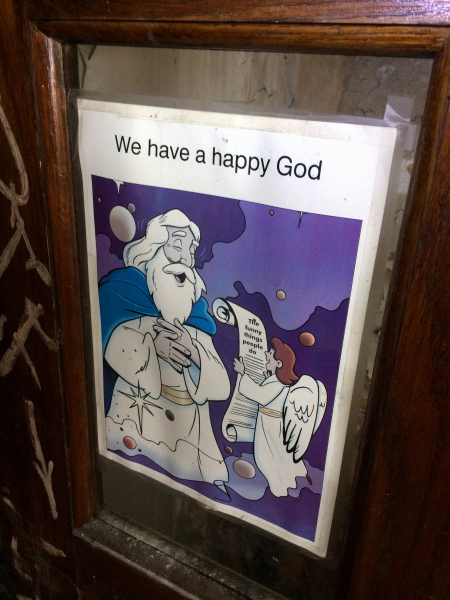
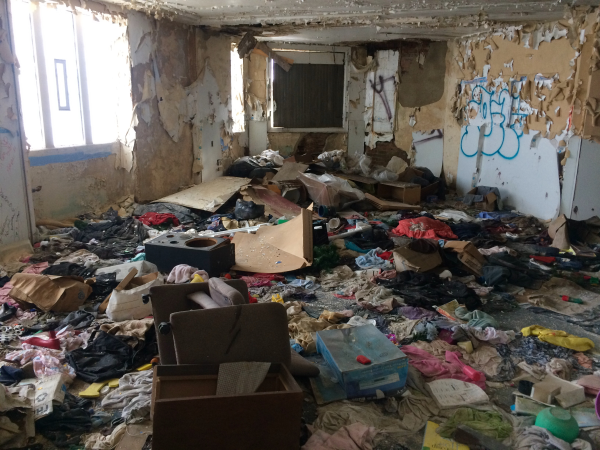
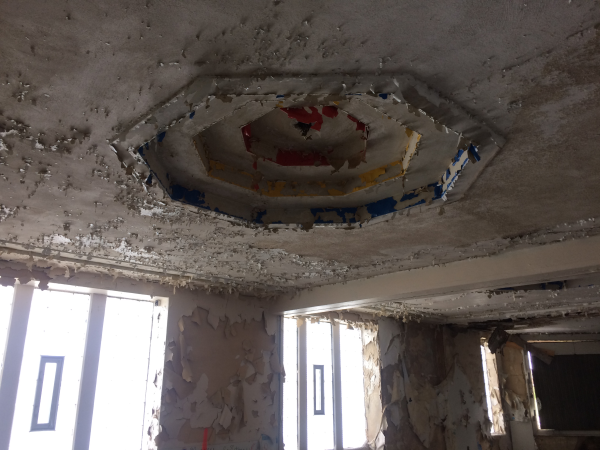
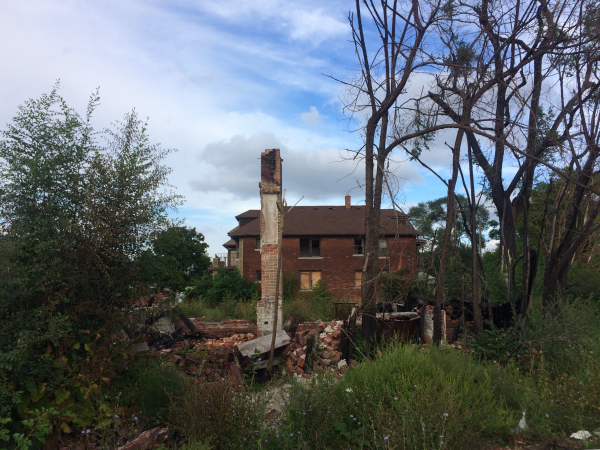
A ton of pictures from the abandoned Abundent Life Christian Center.
So much awesome artwork (and illegal graffiti) at Eastern Market, which unfortunately are also a typical sign that an area has been gentrified...
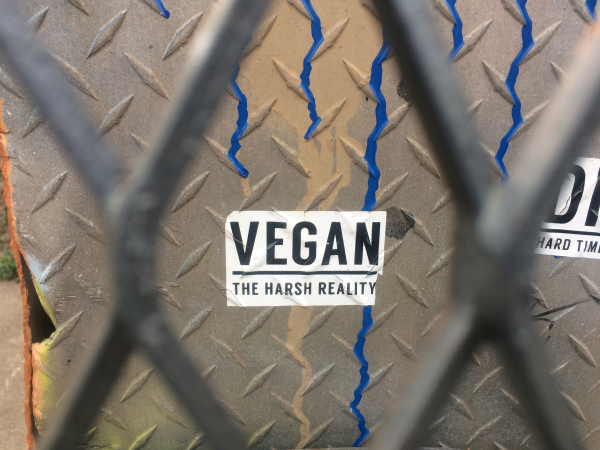
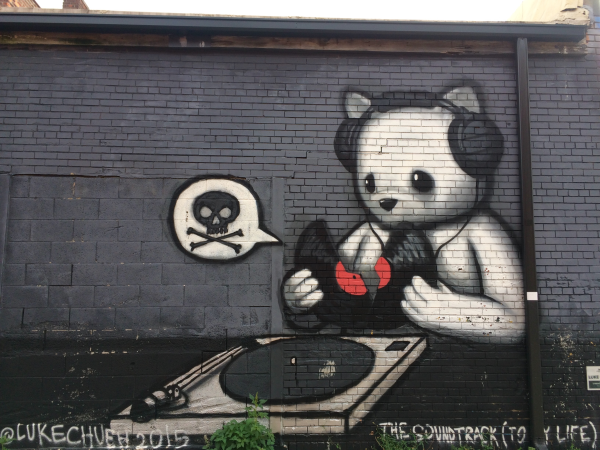
By Luke Chueh.
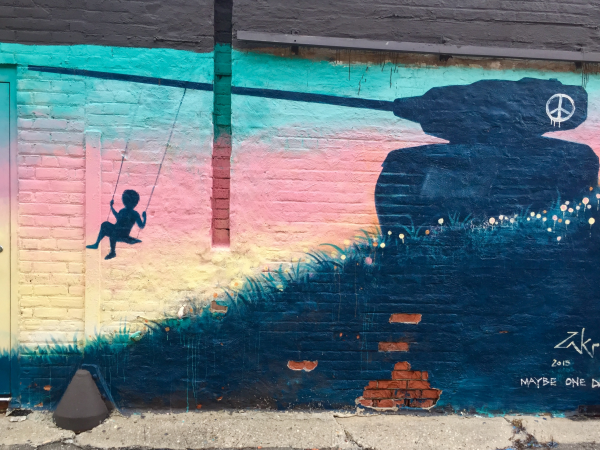
By Ron Zakrin.
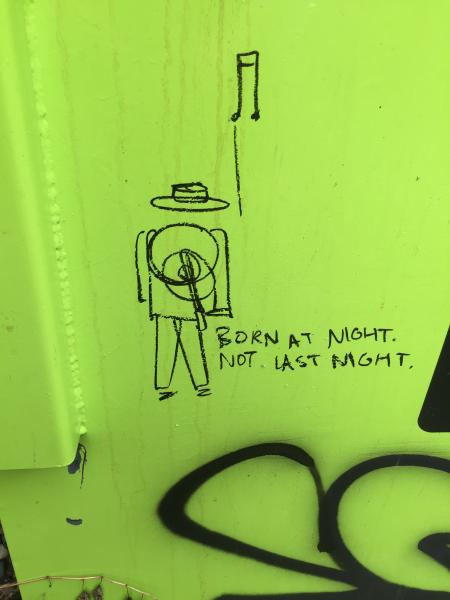
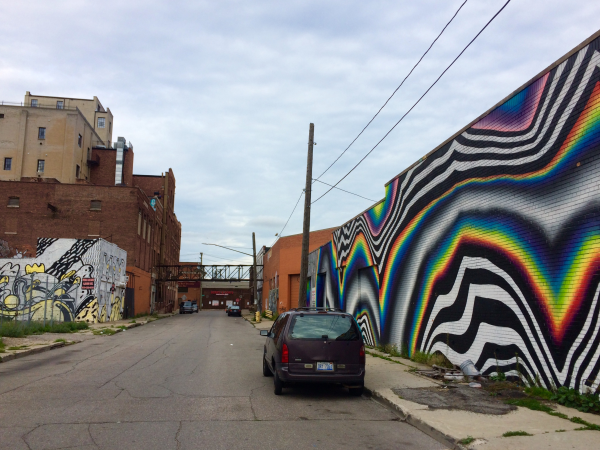
Wall on right by Felipe Pantone.
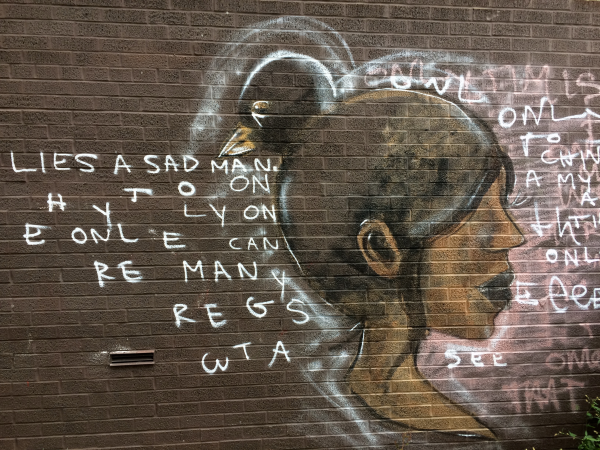
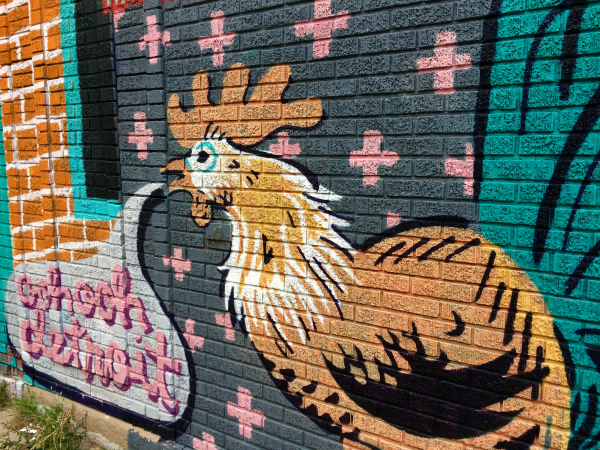
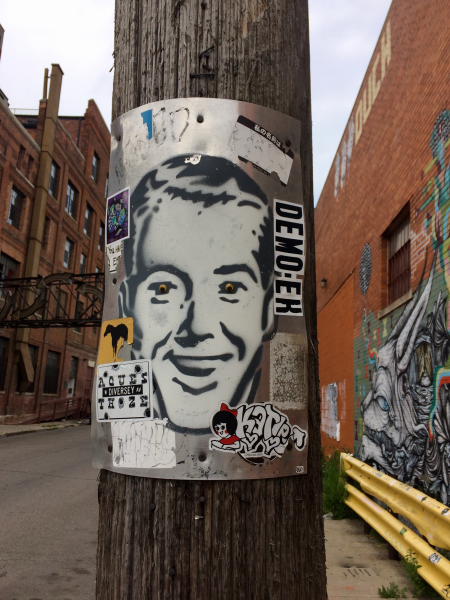
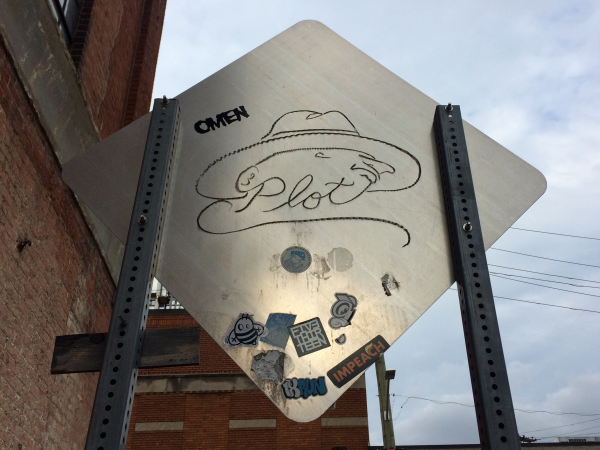
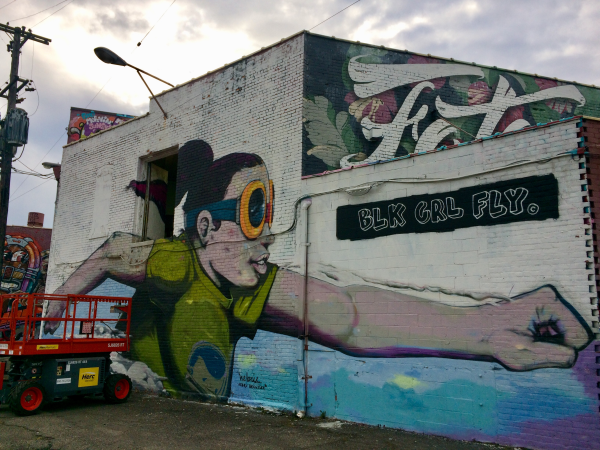
By Hebru Brantley.
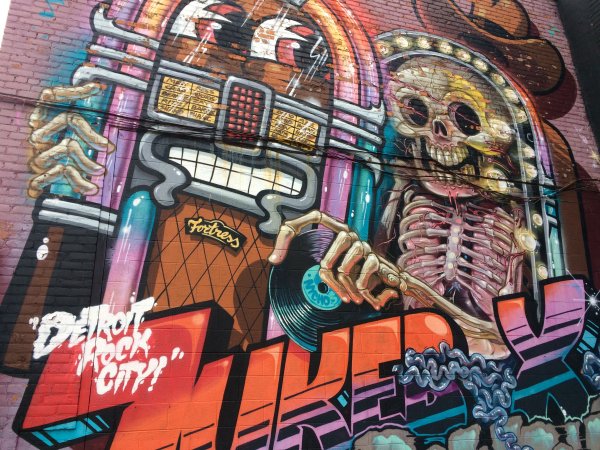
By Nychos.
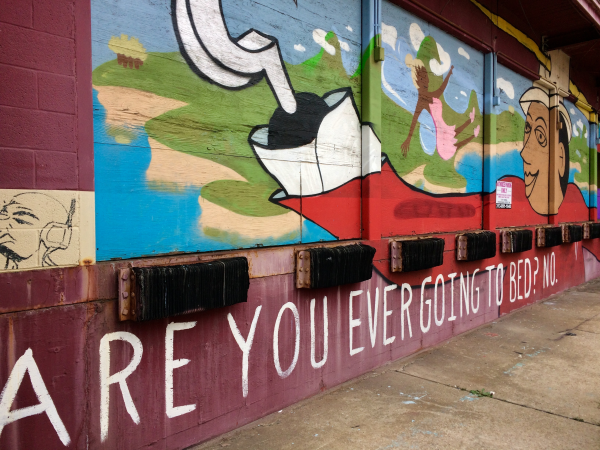
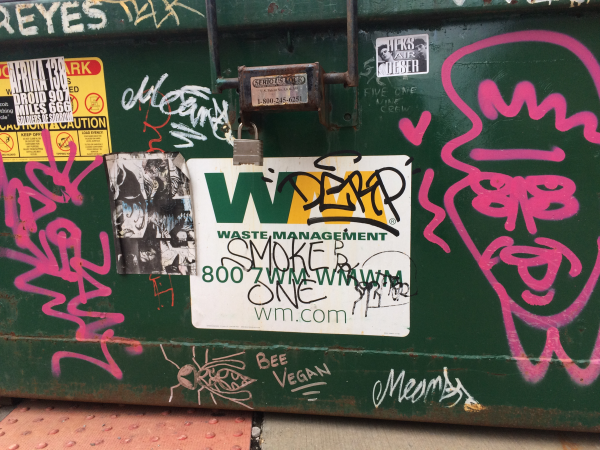
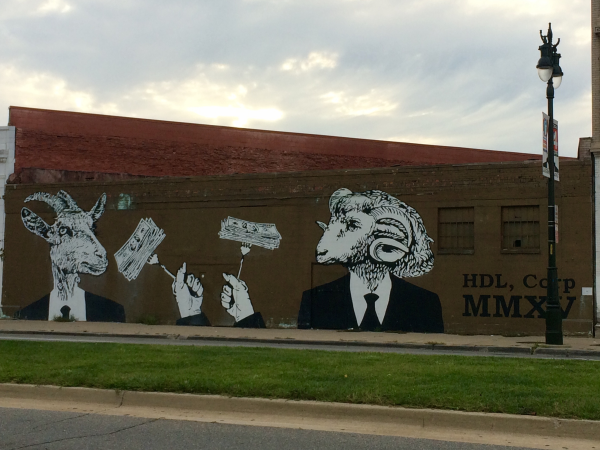
By Hygienic Dress League.
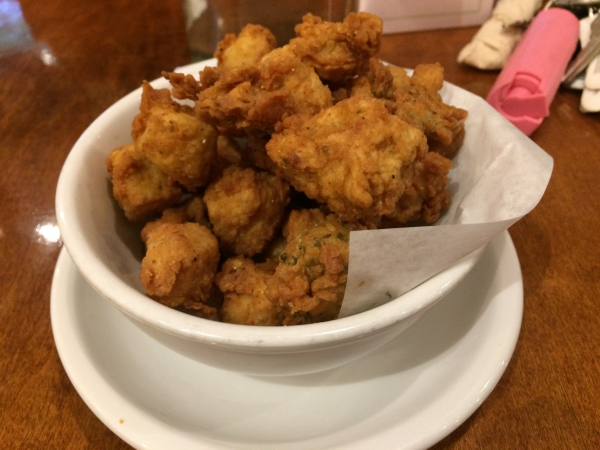
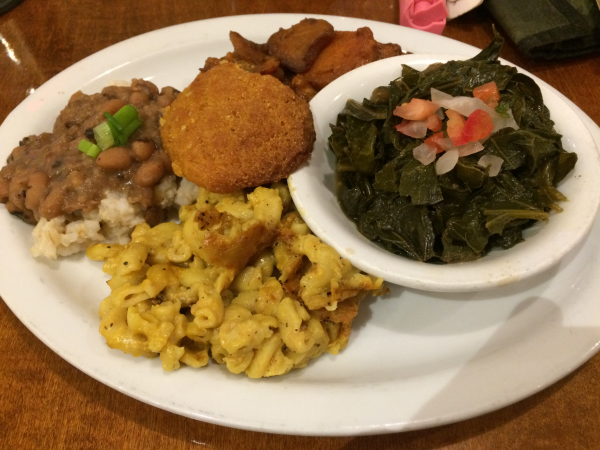
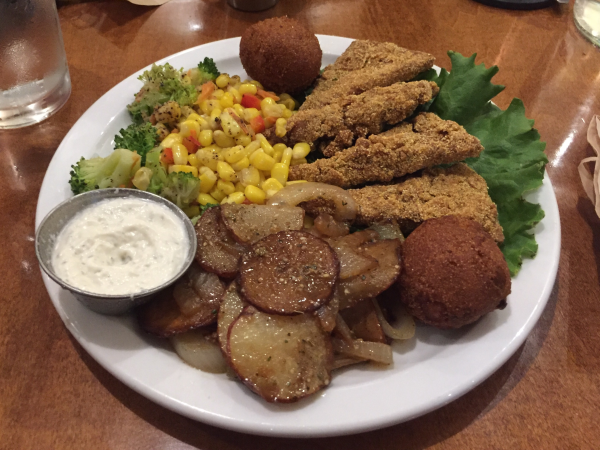
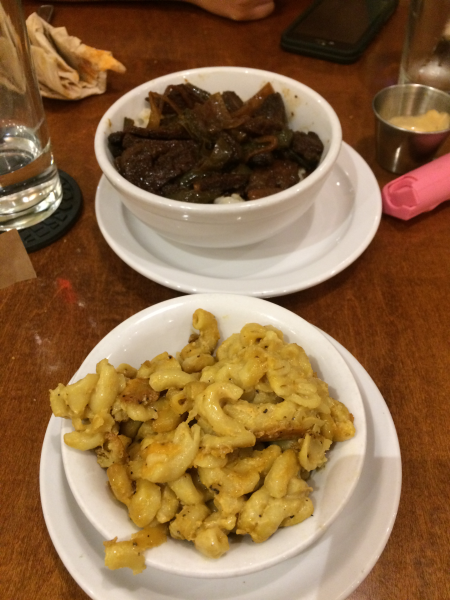
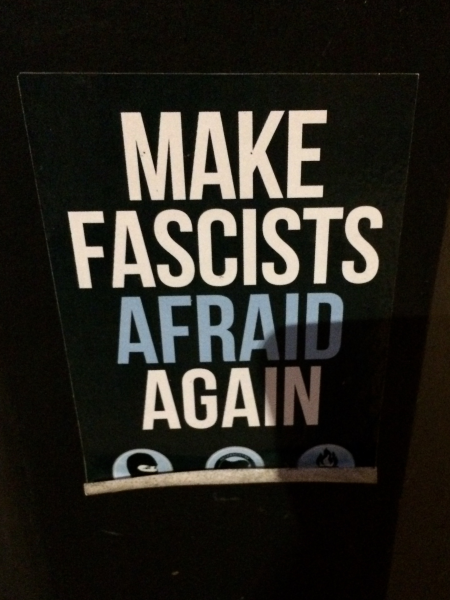
Detroit Vegan Soul!